SENTOSA THE Story

SENTOSA THE Story
The cover depicts some of the island’s many faces –Palawan Beach and Fort Siloso Skywalk; connecting them is the road leading to Fort Siloso. Together, they hint at the diversity of experiences to be had on Sentosa – an island where discovery never ends.

Story THE SENTOSA
SENTOSA THE Story
UNENDING DISCOVERIES

 A view of Sentosa’s Siloso Beach and magnificent greenery, with the iconic cable car system in the background.
A view of Sentosa’s Siloso Beach and magnificent greenery, with the iconic cable car system in the background.
FOREWORD MR GAN KIM YONG 14 Minister for Trade and Industry WELL-WISHES MR S. ISWARAN 18 Minister for Transport and Minister-in-Charge of Trade Relations MR ALVIN TAN 19 Minister of State, Ministry of Trade and Industry and Ministry of Culture, Community and Youth MR LEE CHUAN TECK 19 Permanent Secretary (Development), Ministry of Trade and Industry MESSAGES MR BOB TAN 22 Chairman, Sentosa Development Corporation MS THIEN KWEE ENG 24 Chief Executive Officer, Sentosa Development Corporation Contents
MOMENTS, MILESTONES 186 AND THE MAKING OF HISTORY WELL-WISHES FROM 196 PAST LEADERS AND PARTNERS ACKNOWLEDGEMENTS 204 CHAPTER 1 EXPLORING THE PAST 32 CHAPTER 2 GETTING PEOPLE TO AND 60 AROUND THE ISLAND CHAPTER 3 GROWING THE ISLAND 82 AND GIVING IT NEW SHAPE CHAPTER 4 TRANSFORMING THE ISLAND 102 CHAPTER 5 CONSERVING AND 138 SUSTAINING THE ISLAND CHAPTER 6 REIMAGINING THE FUTURE 168
MR LEE KUAN YEW THEN-PRIME MINISTER AT THE OFFICIAL OPENING OF THE SENTOSA GOLF CLUB SUNDAY, 14 JULY 1974

I hope Sentosa Development Corporation will try to keep this island as a retreat for those who seek a place where they can walk, without competing with cars, lorries and buses; a place where they can swim in the sea without bothering about tide-tables; and, most important, a place where they can get away from the noise of machines.

6 THE SENTOSA STORY
An aerial view of Sentosa in the 1950s, back when it was called Blakang Mati, or ‘Death from the Back Island’. The island’s location was long known for its strategic importance, having been marked on a map dating to the early 1600s and playing a crucial role in Singapore’s defence during the colonial period.

7 UNENDING DISCOVERIES

 This view of Sentosa taken in 2022 is from a similar angle as the aerial photo from the previous page 7. Fifty years after being set on a path to becoming an island resort, Sentosa has grown in size and been reshaped to accommodate developments for more amenities and infrastructure for guests – all while preserving its dense green cover and remnants of its historical past.
This view of Sentosa taken in 2022 is from a similar angle as the aerial photo from the previous page 7. Fifty years after being set on a path to becoming an island resort, Sentosa has grown in size and been reshaped to accommodate developments for more amenities and infrastructure for guests – all while preserving its dense green cover and remnants of its historical past.
THE STORY OF SENTOSA is one of transformation, as it has gone from a young nation’s playground to one of the world’s leading leisure destinations under the charge of the Sentosa Development Corporation (SDC) over the last 50 years.















Sentosa is a unique place with many faces. An island retreat, Sentosa is a mere 15 minutes away from Singapore’s Central Business District. It is rich with the natural tropical island assets of secondary rainforests and the surrounding sea, and celebrates a colonial history. Sentosa also maintains relevance to the visitors of today with endlessly rejuvenated offerings from luxury retreats to world-class attractions.
Commemorating Sentosa’s Golden Jubilee as well as SDC’s 50th anniversary, the publication of this book is but one event in a year of celebrations. Beyond its pages, the Sentosa story has also been documented through a collection of mementos, artefacts and other items that have been sealed away for posterity in a time capsule.

While this book is a record of important milestones for Sentosa over the past five decades, it also highlights some of the ways that SDC is reframing the island’s challenges in the present as opportunities to grow sustainably into the future.



Through this telling of Sentosa’s story, we hope that you reflect on your own memories on the island over the years, and get excited for the endless opportunities for discovery that still await you.


10 THE SENTOSA STORY


































11 UNENDING DISCOVERIES

12 THE SENTOSA STORY

13 UNENDING DISCOVERIES
Elevated 10 storeys above the ground, the Fort Siloso Skywalk leads directly into the 19thcentury Fort Siloso.
The island has evolved and blossomed through the past five decades as a result of SDC’s resolve to relentlessly reinvent and refresh its offerings, whilst retaining the island’s charm.

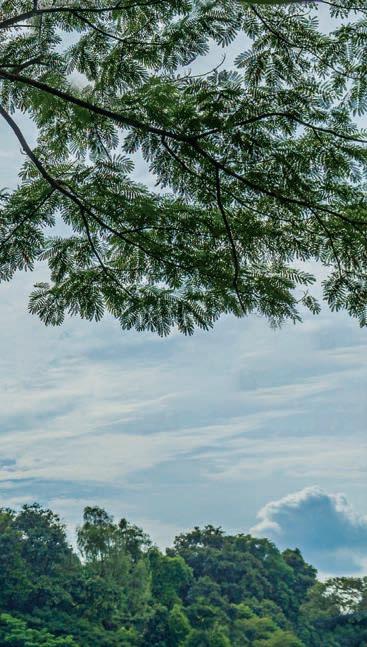
14 THE SENTOSA STORY
FOREWORD BY MINISTER
MR GAN KIM YONG
Minister for Trade and Industry
Over the past five decades, Sentosa has evolved from its humble beginnings as a coastal settlement to become a local retreat for many Singaporeans and a must-visit destination for visitors from around the world. Home to worldclass attractions, championship golf courses, luxury hotels, and natural landscapes, Sentosa’s myriad offerings have played a significant role in the vibrancy of Singapore’s evolving tourism sector.
The island also houses Singapore’s first integrated resort, Resorts World Sentosa (RWS). Over the next few years, we can look forward to new additions such as the Super Nintendo World and Minion Park to Universal Studios Singapore, an enhanced Oceanarium, and a new waterfront lifestyle complex.
Emerging Stronger from Difficult Times
Sentosa has weathered its fair share of challenges, most notably from the recent COVID-19 pandemic that hit the global tourism industry severely. Remarkably, the Sentosa Development Corporation (SDC) and businesses on the island rallied together and curated new and refreshed offerings to uncover the hidden heritage and biodiversity gems on Sentosa. Our residents also responded positively to these initiatives. As a result, between
1 April 2021 and 31 March 2022, Sentosa enjoyed the highest numbers of local visitors in its recent history.
Remaining Competitive
With today’s travellers being more discerning than ever, it is crucial that Sentosa continues to invest and innovate to remain a destination of choice for wellness and sustainable tourism. To this end, Sentosa is being revitalised and refreshed with new attractions to meet the evolving demands of visitors. The Sentosa experience will also be extended through the development of Pulau Brani, a key component of the Greater Southern Waterfront Master Plan, which will house new and exciting attractions. Meanwhile, green spaces and corridors will be linked to Sentosa, increasing accessibility for Singaporeans to enjoy being close to nature.
The island has evolved and blossomed through the past five decades as a result of SDC’s resolve to relentlessly reinvent and refresh its offerings, whilst retaining the island’s charm. I am confident that future generations of visitors, both local and international, will discover the multi-layered appeal of this special island and continue to build beautiful memories of their time here.
15 UNENDING DISCOVERIES

Sentosa’s Mess Hall repurposes military barracks built in 1906 to offer modern dining today. It exemplifies the island’s success in conservation through adaptive reuse.

WELL-WISHES

It feels like it was just yesterday when I attended the unveiling of the Sentosa Express in 2006, which is now a familiar and convenient mode of access to the island. I am proud to have witnessed many of Sentosa’s major milestones through the years, and would like to commend the entire Sentosa team for their sustained efforts and dedication that has made them possible. I am certain that Sentosa will continue to refresh and revitalise itself as Singapore’s very own distinctive island resort.
MR S. ISWARAN Minister for Transport and Minister-in-Charge of Trade Relations

18 THE SENTOSA STORY
Sentosa holds wonderful memories for me as a boy. Even today, it remains a special destination for me and my family. We visit regularly, each time creating new memories for my children to share and cherish. Thank you, Sentosa Development Corporation, and all Sentosians for creating magical moments for generations of visitors over the last 50 years. Looking forward to the next 50!
MR ALVIN TAN Minister of State, Ministry of Trade and Industry and Ministry of Culture, Community and Youth

From a fishing village to one of Asia’s leading leisure destinations today, Sentosa has continually reinvented itself to enchant its guests. This commemorative book acknowledges and celebrates the key drivers behind Sentosa’s transformation – the people of Sentosa Development Corporation. Here’s to more great years of delighting and charming guests on this unique island destination that Singaporeans can call our own.
TECK Permanent Secretary (Development), Ministry of Trade and Industry


19 UNENDING DISCOVERIES
MR LEE CHUAN

The Sentosa Golf Club’s world-class Serapong Course has won numerous accolades. In 2022, Golf Digest ranked it 55 on its list of the 100 Greatest Golf Courses in the World as well as Singapore’s best golf course for the 10th year in a row. It also won the title of Asia’s Best Golf Course at the World Golf Awards 2022.

MESSAGE FROM OUR CHAIRMAN
MR BOB TAN
Sentosa Development Corporation
The Sentosa Development Corporation has come a long way in the past 50 years. In the early days, the emphasis was on developing the island and attracting businesses that can make Sentosa into a tourist destination. We have since evolved our role to one where we are proactively working with our island partners to build a prosperous and vibrant island economy that offers world-class attractions and experiences not only to overseas tourists but to locals alike.
This commemorative book captures our development over the decades and our vision for the island’s future. When people visit Sentosa, we want them to enjoy all that the island has to offer, with our island partners working together and supporting one another to curate a suite of experiences for each visitor.
While we widen the menu of possibilities for our guests, we are also striving to be the best in what we do by working together as one Sentosa family, in the area of sustainability and in leveraging technology and digitalization to provide a memorable and frictionless experience for our visitors.
We have also broadened our social inclusivity framework. When it comes
to recruitment, for example, we are looking at ways to play a bigger role in employing and engaging people with disabilities. In collaboration with our island partners, we are working with SG Enable and other like-minded social organizations to identify employment opportunities that we can support and encourage through training and changes in the workplace environment.
As we celebrate our Golden Jubilee, we want to honour the many people who have contributed to Sentosa’s success. Our pioneers and leaders like Mr Alan Choe and many others after him have contributed much to the island’s development through their vision and passion.
Our leaders and employees are the builders of Sentosa – they made it what it is today. Many have devoted their lives to growing Sentosa, and their achievements are presented in this book. Together, their dedication has created a landmark that many Singaporeans and tourists love to visit, not just once but repeatedly.
As we look ahead, we will continue to preserve and safeguard Sentosa, maximise and fulfil its potential, and renew and reinvigorate it for future generations. The best is yet to come.
22 THE SENTOSA STORY
Our leaders and employees are the builders of Sentosa – they made it what it is today. Their dedication has created a landmark that many Singaporeans and tourists love to visit, not just once but repeatedly, and their achievements are presented in this book.
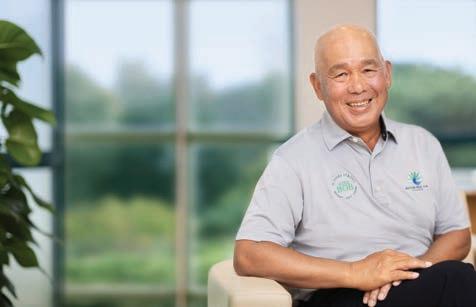
23 UNENDING DISCOVERIES
This book chronicles the precious memories of our guests, leaders and staff alike. It captures the spirit of who we are, this DNA of SDC, how we developed Sentosa, and our plans and aspirations for its future.

24 THE SENTOSA STORY
MESSAGE FROM OUR CHIEF EXECUTIVE OFFICER
MS THIEN KWEE ENG
Sentosa Development Corporation
How do you describe a journey of 50 years? Since the Sentosa Development Corporation was founded in 1972 to develop, manage and promote Sentosa, it has crafted an array of beautiful and memorable offerings that transformed a sleepy island into a world-renowned destination. By harnessing the island’s unique heritage and nature, and injecting our own sense of fun, we have enabled generations of Singaporeans and tourists alike to create lasting memories.
As we celebrate our Golden Jubilee, the milestone has been an opportunity to celebrate and reflect on our progress so far, and on the path ahead. This commemorative book aims to do both. We have set down the experiences of our leaders and staff who put heart and soul into Sentosa, delved into our challenges and high points, and outlined our ambitions for the island. It is a chronicle, not just of our past and future, but of the spirit and hard work that have made both possible.
In the past few years, we have embarked on major projects and initiatives to bring the Sentosa experience to the next level. We have fostered greater collaboration with our island partners (businesses on the island) as One Sentosa to deliver a coherent and outstanding experience. This has enabled us to weather the
COVID-19 pandemic and emerge stronger. This approach also helps us to compete, differentiate and strengthen our collective proposition as we build together, year by year.
The same collaborative One Sentosa spirit has empowered us to push the boundaries on the island’s sustainability. Our work in this area, supported by the dedicated and collective effort of our island stakeholders and partners, has been recognised worldwide. In 2022, together with Resorts World Sentosa, Sentosa became Asia’s first island destination to be certified as a sustainable tourism destination by the Global Sustainable Tourism Council.
Even as we made progress on multiple fronts, we took the time to revisit and rearticulate our brand values. These values, which include celebrating Sentosa’s sun, sea, sand and nature in whatever we do, will anchor and guide us as we move forward.
As we mark our 50th anniversary, we hope that Sentosa will continue to be well-loved, by both Singaporeans and international visitors. The island has a special place in the hearts of many Singaporeans and tourists. We will continue to ignite the passion of our staff and partners, to build upon its legacy, and keep delivering outstanding experiences for many years to come.
25 UNENDING DISCOVERIES


then SENTOSA


now
28 THE SENTOSA STORY
Over the past 50 years, the Sentosa Development Corporation has steered Sentosa’s development from a sleepy island to a vibrant tourist destination renowned on the global stage.


29 UNENDING DISCOVERIES

Sentosa’s Tanjong Beach has been kept quiet and idyllic to differentiate it from the more youthful and vibrant Siloso Beach and family-friendly Palawan Beach. At the same time, the opening of the Tanjong Beach Club in 2010 has ushered in a more lively beach culture that Sentosa is famous for today.
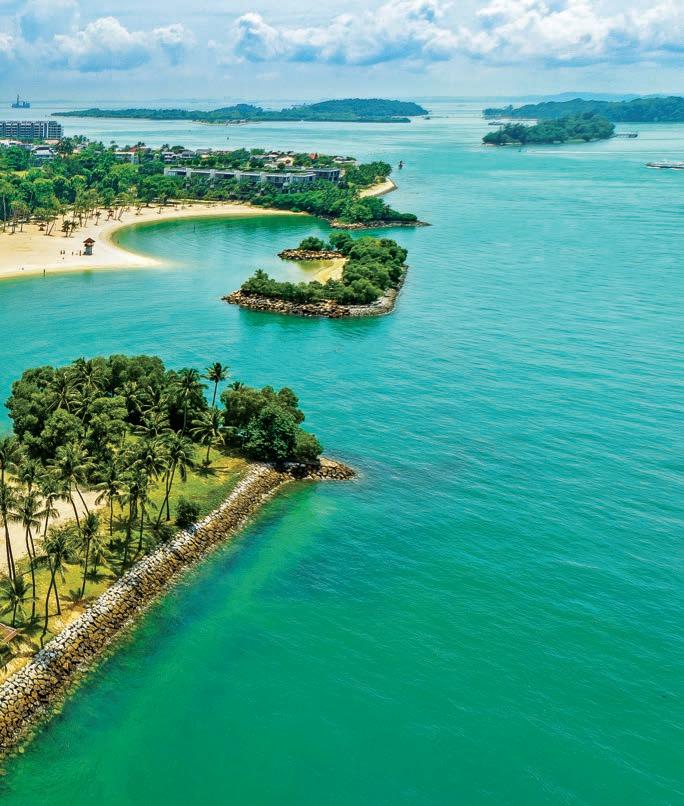

32 THE SENTOSA STORY
the past Exploring








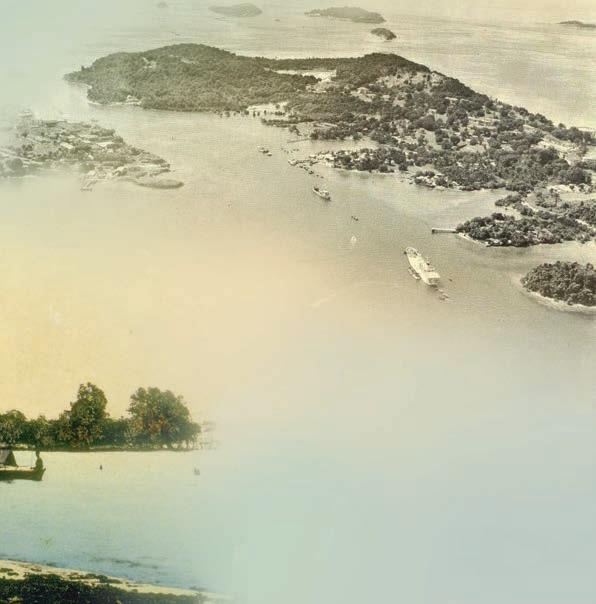
CHAPTER 1 33 UNENDING DISCOVERIES
This island should be a resort island… We will retain the natural beauty and yet plant in strategically, within a planned master plan, attractions that will complement, supplement, and augment the resort island into a place that will cater for all age groups, all income groups, both the locals and tourists.
Quote excerpted from the oral history interview of Mr Alan Choe (Accession No. 001891 / Reel No. 15), Oral History Centre, National Archives of Singapore.
MR ALAN CHOE on his initial vision for Sentosa, in an interview in 1974
34 THE SENTOSA STORY
 A kelong (offshore fishing platform) near Siloso Point, 1957.
A kelong (offshore fishing platform) near Siloso Point, 1957.

36 THE SENTOSA STORY
A village on the northern coast of Blakang Mati, 1935.
Changing the trajectory of an island steeped in heritage
A glimpse of the past
Before Sentosa became an idyllic getaway island, it was known as Pulau Blakang Mati, or ‘Death from the Back Island’ in Malay. The ominous name may be a reference to early piracy, which had been recorded in the vicinity as far back as the 14th century by Chinese trader Wang Dayuan. That it may have attracted such activity is not a surprise; its geography and natural features offer economic and strategic potential that have long been recognised.
By the 1600s, the straits around Singapore had been established as a key passage within global trade networks, offering the shortest route between the Straits of Malacca and the South China Sea, connecting East and West. Within these straits and just half a kilometre south of mainland Singapore, the island was marked on a 1603 map as Blacan Mati by Portuguese-Malaccan cartographer Manuel Godinho de Erédia, suggesting an awareness of its strategic and commercial potential.
Know? DID YOU
Sentosa is not just close to the Singapore mainland. It’s not even 500 metres away, less than a quarter of the length of Orchard Road. 37 UNENDING DISCOVERIES

 The highest points on Blakang Mati were strategic locations for defence during the colonial period. Hilltops became homes for forts, while barracks and other military facilities were sited on a ridge that runs parallel to the southern coastline, in the vicinity of Mount Imbiah.
Mount Imbiah
Fort Siloso
Pulau Brani
Fort Serapong
The highest points on Blakang Mati were strategic locations for defence during the colonial period. Hilltops became homes for forts, while barracks and other military facilities were sited on a ridge that runs parallel to the southern coastline, in the vicinity of Mount Imbiah.
Mount Imbiah
Fort Siloso
Pulau Brani
Fort Serapong
38 THE SENTOSA STORY
Fort Connaught
The island supported early settlements of Orang Laut, who lived on their perahus (traditional sailboats) and hired themselves out as pilots to navigate European vessels through the reef-strewn straits. Their livelihoods were also tied to the island’s natural resources – they fished and sold fresh water, palm leaf umbrellas and hats, fruits and other commodities to passing vessels.
Blakang Mati’s population grew more diverse with groups of Bugis, Chinese and Indians settling there by the time Singapore became a British colony in 1819. Permanent residences and extensive agriculture soon developed, and by 1848, as many as 200 acres of pineapple plantations were documented on the island.
As Singapore’s importance to British trade and shipping quickly grew, so did the need for coastal defences to protect the colony. Due to its strategic location, Blakang Mati was developed for military use, with the British establishing command headquarters, barracks and batteries on the island. By the 1890s, fortifications had been built on its hills to protect Keppel Harbour, the shipping straits, and the town of Singapore itself. These included Fort Siloso in the west, Fort Connaught in the east (originally called Fort Blakang Mati East), and Fort Serapong, which was built on the highest hill on the island, reaching 92 metres at its summit.

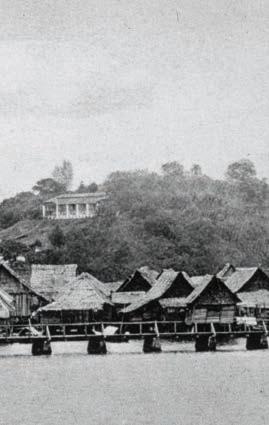 Orang Laut stilt houses on the north side of Pulau Brani, with buildings on Blakang Mati in the background, 1900s.
Fort Connaught’s powerful guns guarded the eastern approach into Keppel Harbour. When the Japanese invaded during World War II, these 9.2-inch guns were turned landwards to fire on advancing troops. They were ultimately destroyed to prevent them from falling into enemy hands.
Orang Laut stilt houses on the north side of Pulau Brani, with buildings on Blakang Mati in the background, 1900s.
Fort Connaught’s powerful guns guarded the eastern approach into Keppel Harbour. When the Japanese invaded during World War II, these 9.2-inch guns were turned landwards to fire on advancing troops. They were ultimately destroyed to prevent them from falling into enemy hands.
39 UNENDING DISCOVERIES
A 9.2-inch gun at Mount Serapong. As the highest point on Blakang Mati, Serapong’s summit was an ideal location for the construction of an infantry redoubt in the 1880s. This was later expanded into a fort. The fort suffered tremendously during World War II, being bombed by the Japanese in January 1942 and ultimately destroyed by British engineers in the days leading up to the surrender of Singapore.
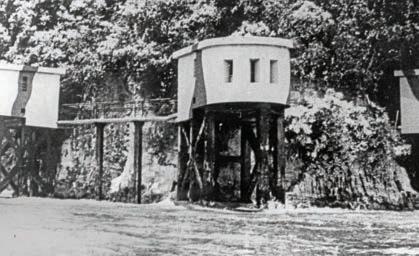

40 THE SENTOSA STORY
Serving as part of a coastal defence network, the searchlight towers at Rimau Point, Fort Siloso, were used to illuminate the area around the entrance to Keppel Harbour.
These defences were called into action when Japan invaded Singapore during World War II. Seeing Blakang Mati as a threat, the Japanese carried out bombing raids on the island in January and February of 1942. On 11 February, the battery at Fort Siloso, together with the battery at Labrador, began firing at enemy targets on West Coast Road and the Jurong River. Over the next three days, the Siloso battery destroyed oil installations and tanks on Pulau Bukom and Pulau Sebarok to

deny the Japanese their use. False reports of Japanese landings triggered the eventual spiking of Blakang Mati’s batteries and their magazines. Fort Siloso was the first to go in a controlled demolition on 14 February. As the Japanese Occupation dawned the following day, by edict, Singapore was renamed Syonan-to, or ‘Light of the South Island’. Blakang Mati became Kashima, or ‘Deer’ Island, and its military buildings were used to intern prisoners of war.
Know? DID YOU
According to an urban legend, regimental silver and other silverware from the Officers’ Mess were buried in its front lawn before the Fall of Singapore in 1942. People living on the island tried in vain to find the silver.
Outside of military duties, which consisted of arms training, physical drills and manning the guns and other defences on the island, troops kept themselves entertained with sports. Here, soldiers are playing badminton at Fort Siloso sometime in the 1940s–1950s.
41 UNENDING DISCOVERIES
After the war, the island’s population surged as it became a temporary home for servicemen from the Royal Navy and soldiers from across Malaya. Civilians who worked for the military also took up residence, including shoemakers, dhobies (laundry workers) and amahs (female domestic servants). As the British military presence was gradually rebuilt on the island, its civilian population continued to grow, with some 1,000 Malay, Chinese and Tamil residents by 1959 and schools and places of worship established to support these communities.
But the trajectory of the island, and that of Singapore, changed on 9 July 1963 when then-Prime Minister Lee Kuan Yew signed the Malaysia Agreement in London. This agreement, entailing the release of military land in Singapore, opened up land for grabs on Blakang Mati and a host of possibilities for its future development. Even before the handover of the island by the withdrawing British military forces, it was being sought for a variety of different uses.

42 THE SENTOSA STORY
A provision shop on Blakang Mati, 1950s.
Before the war, the military set up a school for about 40 children of married soldiers who lived on the island. Every day, they were taught by a teacher who came from a village on Pulau Brani.
The school was started up again after World War II. It catered mainly to the children of servicemen, but also a small number of kids from the island’s kampongs and civilians working for the military. By 1963, there were three primary schools on Blakang Mati and Pulau Brani, attended by about 750 students from the kampongs on the two islands. In 1964, the Government constructed the Blakang Mati Integrated Primary School, which brought together the Malay, English and Chinese language education streams.


43 UNENDING DISCOVERIES
A plan for the future
With the withdrawal of the British military from 1967, the Singapore Armed Forces (SAF) took over the barracks and other military facilities on the island, and the possibilities for developing Blakang Mati were numerous.

A number of ideas involved seatrade – there were plans to use the island as a free port zone with warehouses for storing goods in transit; a Canadian consultant recommended the construction of deep-water berths for an industrial port; and the Port of Singapore Authority envisioned Blakang Mati as a regional distribution depot for bulk cargo, to capture the surging traffic of container ships.
Others saw Blakang Mati’s potential to draw tourists to the newly independent Singapore. The Singapore Tourist Promotion Board (now the Singapore Tourism Board) had ambitions to build a tourism complex on the island, while a consortium of investors from Singapore, Hong Kong, Macau and the United States sought land there for a casino, hotels and a stadium for greyhound racing.
Then news came out that the Government had agreed for Esso to establish an oil refinery on the island, which the company planned to eventually expand into a petrochemical complex. On hearing the news, Dr Albert Winsemius, a
Before the British left Singapore, their lands and facilities were handed to the Government. There was a fierce campaign to recruit locals for the military, and by 1968 the Singapore Armed Forces (SAF) were already being deployed on Blakang Mati. A Bases Economic Conversion Department had been set up to look into commercial uses for the military assets, and was likely to have made the decision for SAF to take over the island’s barracks and other military facilities.
44 THE SENTOSA STORY
key advisor on Singapore’s economic development, was dismayed about the plans, given the island’s proximity to the mainland and the potential to develop it for recreation.
Dr Winsemius enlisted the help of architect Alan Choe to convince the Government to reconsider the plans for the refinery in favour of tourism. Mr Choe, who at the time was the head of the Urban Renewal Department that had been set up by the Housing and Development Board in the 1960s, believed that the island’s rich natural environment made it an important green lung for Singaporeans that could also attract tourists.
Mr Choe quickly came up with a simple plan to transform Blakang Mati into a resort island, and Dr Winsemius drafted a paper comparing the potential of Singapore’s tourism and leisure industry with the economic and long-term impact of siting the refinery on the island. The plan was taken to then-Finance Minister
Dr Goh Keng Swee, who supported the idea of developing the island for Singaporeans to enjoy and sided with the notion of transforming it into a leisure resort. Mr Lee Kuan Yew was convinced by the proposal after a visit to the island.
In October 1969, the American firm Dillingham Overseas Corporation was engaged to do a comprehensive feasibility study of Blakang Mati to assess its suitability for tourism. The study confirmed the island’s promise as a tourist draw, and a public contest was held to give the island a new name to match the new vision. The name Sentosa, meaning ‘tranquillity’ in Malay, was selected as the winning entry, capturing the island’s future as a place for leisure and recreation. The new name came into effect in September 1970, the same year that the Dillingham firm was hired to prepare the island’s first master plan.

 Field Marshall Sir Gerald Templer reviewing a marchpast of Gurkha Unit troops on Blakang Mati during a visit in 1960. Sir Templer commanded infantry and armoured divisions during World War II, and later led British forces in fighting a communist revolt during the Malayan Emergency.
Singapore’s first satellite earth station was installed on Sentosa in 1971.
Field Marshall Sir Gerald Templer reviewing a marchpast of Gurkha Unit troops on Blakang Mati during a visit in 1960. Sir Templer commanded infantry and armoured divisions during World War II, and later led British forces in fighting a communist revolt during the Malayan Emergency.
Singapore’s first satellite earth station was installed on Sentosa in 1971.
45 UNENDING DISCOVERIES
Know? DID YOU
A steward to lead the charge
After Sentosa was identified as a key project to boost Singapore’s fledgling tourism industry, the Sentosa Development Corporation (SDC) was established. SDC started operating in 1972 with a mandate to oversee the development and management of the island. Along with a range of attractions to bring in visitors, the 1970 Sentosa Master Plan had laid out locations for restaurants and hotels, as well as cable car and ferry terminals. Recognising that Sentosa’s charm was tied to the richness of its natural landscapes, SDC approached the developments with the philosophy of retaining as much of the island as possible in its natural state.
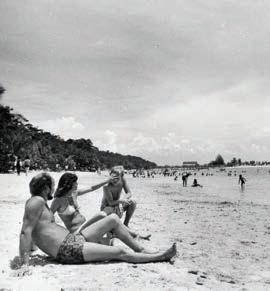
With the conservation of Sentosa’s cultural and natural heritage in mind, many of the old British military buildings were preserved and given new life as attractions and other amenities. For instance, Fort Siloso was converted for use as a gun museum, while Block 69, an old barracks building up on the ridgeline, was used to house the main lobby and reception area for the island’s first hotel, the Apollo Sentosa.
The Sentosa Golf Club (SGC), a subsidiary of SDC, opened in March 1974 to popular reception, despite having the most expensive entrance and membership fees in Southeast Asia even at the time. The Palawan Beach Lagoon that debuted the same year turned out to be all the rage, especially amongst local youth who flocked to the island on weekends and after work during the week.
The Sentosa Golf Club (SGC) was officially opened in 1974 by then-Prime Minister Lee Kuan Yew, who enjoyed a round of golf during the occasion. Watching in the background is his playing partner, then-Speaker of Parliament Dr Yeoh Ghim Seng.

46 THE SENTOSA STORY
The building known as Block 69 was utilised as the main building for the Apollo Sentosa hotel from 1978 until it closed in 1986. This was not its first or last iteration, however, having been used to intern prisoners-ofwar during the Japanese Occupation, and as a temporary clubhouse for SGC and office for SDC more recently. It is currently occupied by a preschool, EtonHouse.

Covering about 150 acres on the south-eastern end of the island, SGC’s Tanjong Course had a unique feature – its second hole was located on a small reef off the main island, requiring a golfer to travel across the seashore to play the hole and make a return trip to continue the game.

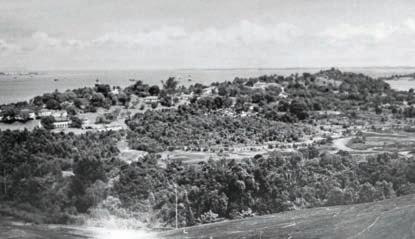

47 UNENDING DISCOVERIES
The swimming lagoon at Palawan was completed in 1974, offering simple pleasures like sunbathing and playing in the sea.
Other attractions expanded the variety of offerings to tourists and local visitors. The Coralarium, designed to showcase the beauty of corals, was the only one of its kind in Asia with its 18-m-tall coralon tower. The Maritime Museum provided an interpretation of Singapore’s searelated history. The Insectarium, initially intended as a temporary exhibition, was later made a permanent attraction and eventually extended to become one of Sentosa’s longest surviving attractions – the Butterfly Park and Insect Kingdom, which only closed its doors in 2021. In later years, many of these earliest attractions and guest facilities were replaced, repurposed or upgraded, but they were important first steps as SDC set Sentosa on its path toward becoming the world-class leisure resort island that it is today.



48 THE SENTOSA STORY
When it opened on 1 January 1975, the Maritime Museum was set up as a temporary space with air-conditioned galleries. Along with maritime art and fine models of ships, it had a lecture room which screened films for the public at 20 cents per person on Sundays and public holidays.
The Insectarium opened in 1975 as a temporary attraction. In 1983, it expanded into the World Insectarium (shown here around 1990), with one of the largest collections of butterflies and other insects on display in the region. It later evolved into the popular Butterfly Park and Insect Kingdom, which eventually closed in 2021.


A HOME TWICE OVER
When Mrs Chua Bee Tin migrated from Sentosa to the Singapore mainland as a teenager in 1976 to make way for the island’s development, she was the last of three generations of her family to call it home. Since the early 20th century, a village near Fort Serapong had housed the Yeo clan which had roots in Meishan in China.


The Yeos made up most of the Chinese community on the island, and Mrs Chua remembers her idyllic childhood like it was yesterday. “After school, we would just throw down our bags and jump into the sea, which was behind the school. These memories are always in my mind and soul.”
She returned to Sentosa later as a train operator for the Sentosa Monorail and then the Sentosa Express, making a different kind of home on the island with her colleagues. “I’ve always loved trains, and in my job I could go around the island, seeing the sea, people and greenery.”
For Mr Abdul Rahman Ashaari, who lived on Sentosa before leaving for the mainland in 1974, his job at the Sentosa Golf Club has also been a homecoming. “During my childhood, we could just walk to our neighbours’ houses. Everyone knew everyone else, like a big family.”
“Some of my best memories are of my friends and I bringing our torchlights and fishing lines to the beach to fish at night. Now, I love my job. To me, working is like coming home,” he said.

 The Coralarium opened in 1974 at the foot of Mount Serapong. Situated on four acres of beautiful garden grounds, it provided an interpretation of the world of corals and featured landscaped pools with various species on display.
The Coralarium opened in 1974 at the foot of Mount Serapong. Situated on four acres of beautiful garden grounds, it provided an interpretation of the world of corals and featured landscaped pools with various species on display.
49 UNENDING DISCOVERIES
SENTOSA DEVELOPMENT CORPORATION


Fifty years on andgrowing stronger
SDC was set up on 1 September 1972 as a statutory board under the Ministry of Trade and Industry through an Act passed in Parliament. Prior to this, the island’s development was steered by a joint committee representing multiple government agencies. The decision to form SDC came in anticipation of the number and diversity of tourism projects planned for Sentosa, and as a consequence of deliberations within the committee, led by members of the then-Finance Ministry who felt that a separate entity with its own permanent staff should undertake the development work. This would also lift the burden of other government bodies in overseeing various aspects of the island.
The physical island of Sentosa, then 703.5 acres in size, was alienated to SDC to manage. Separately, SDC also bought a quantum of developable Gross Floor Area within the original footprint that could be used for commercial purposes such as
hotels, attractions, and food and beverage outlets.
The SDC Act bestowed certain powers to enable SDC to manage every aspect of Sentosa, including master planning for the island, property management, facilitating its economy by attracting and overseeing property investments, aggregating the experiences on the island and managing the island’s municipal functions. This gave SDC the independence to mete out traffic fines on Sentosa and take on other duties that, on Singapore’s mainland, would be carried out by national agencies such as the Singapore Police Force, PUB and the National Parks Board, among other examples.
As a result, SDC has built a multidisciplinary team from diverse backgrounds to manage all aspects of island life, from transportation to wildlife management, as well as development, marketing, event management and many other functions.
Blocks 9 and 10 (in the background) served as SDC’s office in the 1980s, before it moved to the new ferry terminal completed in 1987. The two blocks currently make up the Oasia Resort Sentosa.
50 THE SENTOSA STORY
Prime Minister Lee Hsien Loong officially opened the ferry terminal in 1988, when he was Minister for Trade and Industry, and Second Minister for Defence. The terminal housed the monorail station, two restaurants, and SDC’s office on its third storey.
SDC also set up its office on Sentosa for ease of managing the island. Its first office was at what is today the Oasia Resort Sentosa. It was later shifted to the island’s new ferry terminal completed in 1987. After that, SDC moved to a heritage building at 33 Allanbrooke Road, now used by EtonHouse, before relocating in 2014 to its current premises at 39 Artillery Avenue, in a building which once housed Resorts World Sentosa’s temporary site office.

In the early days when Sentosa was still nascent and unproven as a leisure destination, investors were hesitant to set up restaurants and retail outlets on the island. SDC had to think out of the box and demonstrate that such endeavours could be viable by first establishing and running its own attractions, including the Coralarium and other offerings. Today, SDC’s subsidiary Mount Faber Leisure Group continues to run a limited number
of attractions, such as the cable car and Wings of Time show, where there have been market gaps.

At the heart of SDC’s approach in developing the island has been bringing top-flight brands and investors on board. This has led to a multitenanted melange of island partners helping to enrich, shape and deliver the Sentosa experience. Despite the diversity of tenants, SDC CEO Thien Kwee Eng has strongly promulgated the need for all to operate as One Sentosa, where the island plays and competes as one. This is critical to the coherence of Sentosa as an island destination.
SDC has also laid out a bold vision to be the world’s Best Loved Leisure and Lifestyle Resort Destination. One of the key enduring hallmarks of that is in the delivery of excellent service, even as the offerings on the island are refreshed and rejuvenated. This Service DNA is integral to being a Sentosian.
 Before SDC relocated to its current premises at 39 Artillery Avenue, it occupied a heritage building now used by a pre-school, EtonHouse.
In early 2023, staff from SDC and other Sentosians came together for a beach clean-up at the Southern Islands. It was organised as part of the Sentosa Embraces Litter-Free programme, an effort initiated in 2014 to encourage green practices and a sustainable lifestyle amongst Sentosians, island partners and guests.
Before SDC relocated to its current premises at 39 Artillery Avenue, it occupied a heritage building now used by a pre-school, EtonHouse.
In early 2023, staff from SDC and other Sentosians came together for a beach clean-up at the Southern Islands. It was organised as part of the Sentosa Embraces Litter-Free programme, an effort initiated in 2014 to encourage green practices and a sustainable lifestyle amongst Sentosians, island partners and guests.
51 UNENDING DISCOVERIES
When Mr Darrell Metzger joined SDC as CEO in 2002, he pushed Sentosa’s service standards further. A former Disney executive, he quickly introduced the ‘Sentosa Wave’ as a unique way for all front-line staff to welcome guests to the island. This signature greeting brought a refreshing boost of energy to Sentosa, and a sharpened guest-centric focus that came to define its culture and identity. Every successive CEO and senior leadership team has since built upon Sentosa’s strong service culture as a vital part of the island’s DNA.
Perhaps the most physical expression of this service culture was the establishment of the Tourism Academy on Sentosa in 2003 by SDC and Temasek Polytechnic. The Academy’s objectives were closely linked to SDC’s aspirations for all front-line staff on the island, including those from tenants and lessees, to deliver excellent and consistent service that would create a ‘Sentosa Experience’ for guests.
SDC’s Leaders over the Years
PAST AND PRESENT CHAIRMEN
MR NGIAM TONG DOW Chairman
September 1972 –
November 1974
MR HOWE YOON CHONG Chairman
December 1974 –
February 1979
MR TAN I. TONG Chairman
March 1979 –
February 1985
MR ALAN F. C. CHOE Chairman
March 1985 –
February 2001
MR PHILIP NG Chairman
March 2001 –
February 2007
DR LOO CHOON YONG Chairman
March 2007 –
December 2012
MR MOSES LEE Chairman
January 2013 –March 2019
MR BOB TAN Chairman
April 2019 – present
Offering a full-time Diploma in Hospitality and Tourism Business/Management as well as a short-course programme, many of the students interned with or became employees of SDC and its island partners. Despite its closure in 2011, the Academy left a mark on Sentosa’s service culture that is felt to this day and continues to be central to the Sentosa experience.
In the last 50 years, SDC has steered Sentosa from a sleepy island onto the global stage with world-class attractions, two 18-hole award-winning golf courses, a premium residential enclave complete with marina capable of docking mega-yachts, and 3.2 kilometres of beautiful stretches of golden sandy beaches. As SDC journeys forward in the next 50 years, our aim is to fulfil the ambition to be the world’s Best Loved Leisure and Lifestyle Resort Destination.
MR KENNETH Y. D. GIN General Manager from January 1973
MR CHENG TONG SENG General Manager from July 1980
MR CHEN MENG SHENG
Acting General Manager
June 1981 – May 1983 (seconded from Port of Singapore Authority)
General Manager
June 1983 – October 1987
MR PEK HOCK THIAM General Manager
July 1988 –
September 1989
Rejoined as Chief Executive Officer from
October 1997
MR TANG SIU SHING General Manager
November 1989 –
April 1992
MR WONG WEI TZE
General Manager
January 1993 –
August 1994
MR BENSON T. S. PUAH
Chief Executive Officer
March 1995 – July 1997
MR DARRELL METZGER Chief Executive Officer
February 2002 –
April 2007
MR MIKE BARCLAY
Chief Executive Officer
August 2008 –
September 2015
MR QUEK SWEE KUAN
Chief Executive Officer
October 2015 – May 2020
MS THIEN KWEE ENG
Chief Executive Officer
June 2020 – present
PAST AND PRESENT CHIEF EXECUTIVE OFFICERS
52 THE SENTOSA STORY
THE ARCHITECT OF SENTOSA
MR ALAN CHOE
Chairman, Sentosa Development Corporation (SDC), 1985 – 2001 Deputy Chairman, SDC, 1977 – 1985 Board Member, SDC, 1972 – 1977
I started the ball rolling. Subsequent management teams and Chairmen added a lot of spin to it. Now, Sentosa is glowing brighter and brighter.
Following his instrumental role in the decision to set aside Sentosa as a recreational resort island, Mr Choe became personally involved in its development as a member of SDC’s Board of Directors. He proposed many ideas that have become the island’s defining features.
“When we took over, there was no money, no causeway. So, we started by adapting old buildings used by the British for military garrisons,” he recalled in an interview with CNA. Some of these buildings turned into attractions. Others remained unchanged to showcase their heritage.
He also set up an office on the island. “Sometimes, we went at night to see if we could take advantage of the area (for evening activities).” He was also the driving force behind
Sentosa’s monorail system and causeway connecting the island to the mainland.
After he was appointed as SDC’s Chairman in 1985, he introduced incentives to help attract private investments to Sentosa, made it easier for Sentosa projects to get planning approval if they followed guidelines, and advocated more transformative developments, including the luxurious oceanfront enclave Sentosa Cove.

Mr Choe remembers pitching the island to the private sector and creating a showroom to persuade investors. “We had a big glass building full of big pictures of the things that we hoped to see (on Sentosa), and we opened it to the public for about one month for them to see the opportunities as well as incentives,” he said.
Even when he retired as SDC’s Chairman in 2001, Sentosa’s future was at the top of his mind. “Before I left, I told my successor that every tree anybody cuts down, they must build 100 trees to replace. I also said that all buildings cannot be higher than the treetops.”
Remarking that a green lung such as Sentosa cannot be recreated, Mr Choe emphasised the importance of balancing commercial goals with the need to retain the island’s identity as envisioned by its early planners.
He also stressed that Sentosa’s success is the work of many people and would not have been possible without Dr Winsemius’s original intervention.
Mr Alan Choe briefing Dr Albert Winsemius on Sentosa’s features during a visit to the island in 1993.
53 UNENDING DISCOVERIES

54 THE SENTOSA STORY


55 UNENDING DISCOVERIES

56 THE SENTOSA STORY
Siloso Beach is one of three beaches that make up 3.2 kilometres of golden sand stretches on Sentosa.

57 UNENDING DISCOVERIES

The Sentosa Gateway for vehicles (left, completed in 2009) and garden-themed Sentosa Boardwalk (right, opened in 2011) welcome guests from all around the world, whether they decide to drive, take public transport or enjoy a scenic stroll to the island.





60 THE SENTOSA STORY
Getting people to and around the island
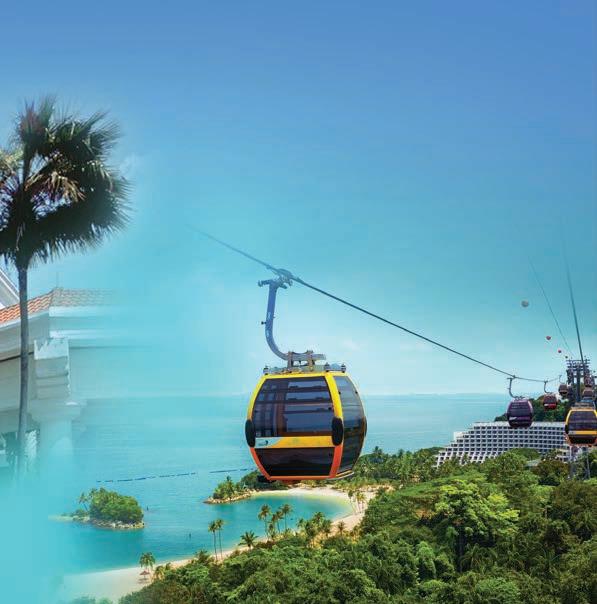
CHAPTER 2 61 UNENDING DISCOVERIES
In the early days, visitors could access Sentosa only by boat. Today, visitors have the choice of taking the cable car, driving across the causeway bridge or, soon, taking the Sentosa Express to reach the island… With such convenient and seamless access, I am confident that Sentosa will continue to be the choice leisure and recreational destination for both Singaporeans and tourists.
62 THE SENTOSA STORY
MR S. ISWARAN, then-Minister of State for Trade and Industry, at the Sentosa Express handover ceremony on 4 December 2006
 Sentosa’s new ferry terminal and terminal plaza, completed in 1987.
Sentosa’s new ferry terminal and terminal plaza, completed in 1987.

64 THE SENTOSA STORY
Spanning the harbour between Sentosa and Mount Faber, the cable car system completed in 1974 carried visitors across the waterway in just seven minutes – not including the waiting time to board, which could be long given the attraction’s enormous popularity.
Improving transportation to support growth
Launching the Cable Car and making modest transportation improvements
When SDC set out to transform Sentosa into a resort island, one of the first priorities was to make it easier for guests to get there. At the time, Sentosa could only be reached by small boats that delivered passengers to an old jetty. SDC worked quickly to upgrade this, added a new jetty near the swimming lagoon, and built a small ferry terminal near Kuching Creek.
But the first major achievement in terms of bringing people to the island was the completion of a cable car system in 1974, the construction of which was overseen in part by the Port of Singapore Authority. Linking Sentosa with the mainland, it ran on a loop between three passenger stations. The cable cars started at a terminal on Mount Faber, proceeded to the Jardine Steps at Keppel Harbour, then crossed the waterway to the Sentosa Station located on Carlton Hill (now called Imbiah Lookout).
When the Mount Faber Line, Sentosa’s first cableway, opened in 1974, it was the first in Southeast Asia, and the first in Asia to straddle a stretch of water.
Know
65 UNENDING DISCOVERIES
? DID YOU
From the beginning, the cable car was envisioned not just as a means of transport, but an attraction in itself. As the world’s first cable car spanning a harbour, the 1.1-mile trip over the water offered excitement and novelty, enticing visitors to come to Sentosa. The cable cars were a hit right off the bat, attracting an average of 50,000 passengers per month. The demand was so high that eight more cars were added to the system the same year of its opening.
While the cable car was a triumph for Sentosa, there was a tragic accident about a decade after it opened. On 29 January 1983, the derrick of an oil-drilling vessel, Eniwetok, struck the cableway when it was unberthing from the wharf nearby. Seven people were killed and 13 others trapped until they could be rescued by helicopter. While the incident was largely considered the result of an unfortunate combination of factors, a number of safety measures were put in place to ensure that such tragedy would never happen again.


? DID YOU
Know
 The cable car system linking Sentosa with the mainland was officially opened in February 1974 by then-Deputy Prime Minister and Minister for Defence Dr Goh Keng Swee, who had championed plans to turn the island into a leisure destination.
The cable car system linking Sentosa with the mainland was officially opened in February 1974 by then-Deputy Prime Minister and Minister for Defence Dr Goh Keng Swee, who had championed plans to turn the island into a leisure destination.
The Singapore Cable Car is harder to maintain than a ski resort in the Swiss Alps. Such resorts typically operate only in the winter, whereas the cable car runs every day for nearly 14 hours under hot and humid conditions. 66 THE SENTOSA STORY
As SDC was focusing on getting people to Sentosa in its early days, it also put infrastructure in place to connect attractions, hotels and transport depots. A network of footpaths was developed to encourage walking, with vantage points often treating guests to sweeping views along the way.

With new road infrastructure and enhancements to existing roadways, guests could get around Sentosa by bus. Initially comprising one doubledecker and six single-deckers that operated on a fixed route, the bus service expanded in 1975 with the addition of a new fleet operated by Red Bus Services. The new buses ran direct routes to popular island attractions such as the Coralarium, the Maritime Museum and the Gun Museum at Fort Siloso.
 Traveling to Sentosa by cable car was an experience that disconnected visitors from the concrete jungle of the city. Upon arrival at the Carlton Hill station (currently Imbiah Lookout), they would have stepped out onto an island that was, at that point, still largely rustic.
In the early days, guests could explore Sentosa by bus or on foot. For a leisurely adventure, they could also hire a cruiser bike from one of the beach kiosks that SDC put up on the island.
Traveling to Sentosa by cable car was an experience that disconnected visitors from the concrete jungle of the city. Upon arrival at the Carlton Hill station (currently Imbiah Lookout), they would have stepped out onto an island that was, at that point, still largely rustic.
In the early days, guests could explore Sentosa by bus or on foot. For a leisurely adventure, they could also hire a cruiser bike from one of the beach kiosks that SDC put up on the island.
67 UNENDING DISCOVERIES
Connectivity improvements with the Monorail and Ferry Terminal
With visitor arrivals growing steadily, the 1980s brought two new transportation-related developments that changed the face of Sentosa.

First to appear on the horizon were the colourfully striped monorail trains that ran on a 6-kmloop around the island. Beginning and ending at the small ferry terminal built near Kuching Creek, the trains made stops near the Apollo Sentosa hotel, Fort Siloso, the swimming lagoon, and the Carlton Hill cable car station.
The monorail was an exciting new development when it opened in February 1982, attracting thousands of people on its opening day. Consisting of nine trains, each with 15 cabins able to carry up to 90 passengers, the monorail system was able to move more guests around the island, helping to meet Sentosa’s rising transportation needs.

The second development was the completion of a brand-new ferry terminal plaza in 1987 to offer a distinctive arrival point for guests traveling by sea. The threestorey building, designed by local architect Lee Coo to resemble a white colonial mansion, was
ornamented with balustrades, a red-tiled roof and a 32-m-high clock tower. An information counter in the centre of the terminal welcomed guests on arrival, while food outlets, shops and viewing galleries made the new plaza a leisure destination on its own.
Officially opened in November 1988 by then-Minister for Trade and Industry and Second Minister for Defence, Mr Lee Hsien Loong, the new ferry terminal provided a physical identity to the entrance of Sentosa for the first time. It also improved accessibility tremendously, doubling the ferrying capacity of the smaller ferry terminal. Able to handle three large ferries at one time and 5,000 visitors every hour, it reduced the travel time from mainland Singapore from six minutes to four minutes.
Extending from the ferry terminal was a new north-south pedestrian link to enhance connectivity across the island. With the new link, visitors had direct access to the beaches straight off the ferry. They could also quickly reach the island’s attractions by monorail, as the terminal had a new station inside.
The striking new ferry terminal provided a distinctive arrival point for guests traveling by sea. As they made their way up the long corridor to the colonial-style building, they would have had a growing sense of anticipation for the holiday awaiting them ahead. Also housing offices for SDC, it made a pleasant new home base for staff as well.
68 THE SENTOSA STORY
The monorail was an iconic feature of Sentosa’s landscape in the 1980s.
The excitement on the mainland was palpable as people prepared to depart for Sentosa. When the ferry finally arrived on Sentosa, guests quickly poured out into the new ferry terminal. It was a huge and majestic building, and at the end of the long arrival corridor, our staff would greet them with the broadest smiles, saying ‘Welcome to Sentosa!’. To many, it was an awesome and unforgettable way to start their island getaway.


 Behind the new ferry terminal, guests could enjoy a stroll through the Fountain Gardens. Featuring an 18th-century European-style design and topiary plantings, the gardens were a popular backdrop for special events and festivals.
MR ALVIN CHIA
Behind the new ferry terminal, guests could enjoy a stroll through the Fountain Gardens. Featuring an 18th-century European-style design and topiary plantings, the gardens were a popular backdrop for special events and festivals.
MR ALVIN CHIA
69 UNENDING DISCOVERIES
Deputy Director, Asset Development, of Sentosa Development Corporation, who developed, managed and operated SDC-owned attractions in the 1990s and 2000s
Connecting to the mainland with the Causeway Bridge
One of the biggest developments in Sentosa’s transportation story was the completion of the Causeway Bridge in 1992. Offering a new gateway for vehicular access, it also boasted a cycling path and wide pedestrian walkway adorned with trees and lit at night. For the first time, visitors could travel to Sentosa by bus, bicycle or on foot.


Surprisingly, though, the public were initially not allowed to drive their own cars across the bridge. It was intended to accommodate bus services shuttling between the mainland and Sentosa, and private vehicles were prohibited as part of strict traffic measures to preserve the island’s resort ambience and tranquillity. In fact, tour coaches were allowed to drop off and pick
 With a pair of towers marking each end, the Causeway Bridge served as an arrival gateway for visitors entering the island resort. Its completion in 1992 was a significant achievement representing SDC’s commitment to transform Sentosa into a world-class holiday destination by improving the island’s transport infrastructure.
With a pair of towers marking each end, the Causeway Bridge served as an arrival gateway for visitors entering the island resort. Its completion in 1992 was a significant achievement representing SDC’s commitment to transform Sentosa into a world-class holiday destination by improving the island’s transport infrastructure.
70 THE SENTOSA STORY
up passengers only at a single point on the island, and private developments were issued limited permits for their service vehicles, tour buses and limousines to enter Sentosa.

Things changed when the Asian Financial Crisis hit in 1997 and the island suffered plummeting foreign arrivals. To attract more locals to make up the loss, SDC
opened up the Causeway Bridge and a public car park on the island. A fixed entry admission fee was initiated per car to make it easy and affordable for Singaporeans and other local residents to come to Sentosa for the day or even make a staycation of it. In 1998, the Causeway Bridge was converted from two lanes to four to accommodate more cars.
 The original Causeway Bridge was expanded with more lanes in the late 1990s and a new bridge was added in the 2000s. The Sentosa Express was completed in 2006, reflecting Sentosa’s growing popularity over a relatively short time period. With the Sentosa Express easily accessible from the Mass Rapid Transit system at VivoCity, the two developments also helped to link Sentosa to Singapore’s broader transportation networks.
The original Causeway Bridge was expanded with more lanes in the late 1990s and a new bridge was added in the 2000s. The Sentosa Express was completed in 2006, reflecting Sentosa’s growing popularity over a relatively short time period. With the Sentosa Express easily accessible from the Mass Rapid Transit system at VivoCity, the two developments also helped to link Sentosa to Singapore’s broader transportation networks.
71 UNENDING DISCOVERIES
Revamping transportation with the Sentosa Express and other developments

In 2002, Sentosa was repositioned as a family-friendly resort destination, with exciting new developments in the works to increase visitor arrivals and encourage guests to stay longer on the island. To meet the expected surge in traffic, its transport infrastructure was targeted for further improvement.
In October 2005, the cable car station on Mount Faber was transformed into the Jewel Box through a major renovation. That same year, the old monorail trains were decommissioned as a new rail system, the Sentosa Express, was built as a replacement.

Opened to the public in January 2007, the Sentosa Express was SDC’s largest infrastructure project since the development of the Causeway Bridge. Running on an elevated two-way track from the Sentosa Station at VivoCity, the new railway system brought visitors to the doorstep of most major attractions on the island. With the Sentosa Station located directly above the HarbourFront MRT station, local residents throughout Singapore as well as tourists benefitted from the easy access to the island via public transport.
In 2015, a new intra-island cableway called the Sentosa Line was added to the original cable car system launched in 1974. It was named one of Singapore’s Top 50 Engineering Achievements by the Institution of Engineers, Singapore, at its Engineering Feats @ IES-SG50 Awards in July 2016. The award recognised the intra-island cableway as one of the projects that have made the greatest impact on Singapore since 1965, in terms of economic, infrastructural or societal contributions.
5mins wak n g ecnatsid Faber Peak Sentosa Sentosa Station Siloso Point Station Imbiah Lookout Station Merlion Station HarbourFront Station Mount Faber Station INTER-ISLAND CABLE CAR INTRA-ISLAND CABLE CAR
72 THE SENTOSA STORY
The Sentosa Express was able to transport more passengers more quickly than the old monorail, with each driver-operated car carrying up to 3,000 passengers per hour in each direction.
The cable car station on Mount Faber was rebranded in 2005 as the Jewel Box. Complete with restaurants and offering expansive views of the harbour and Sentosa, the Jewel Box was a gateway to Sentosa and leisure destination rolled into one.


JOURNEYS OF LIFE
For former Sentosa bus guides Asmah Aziz and Sarasupathi, the island has played a central role in their life journeys. Soon after Madam Aziz became a guide on Sentosa’s double-decker buses in 1976, she met her late husband Masturi Lehwan.
“He worked at the golf course and kept taking my bus to befriend me. I didn’t take to him at first, but was moved by his sincerity and eventually fell in love,” she said with a smile. Years later, at their daughter Mardiana’s wedding, they joked that the occasion was like a Sentosa Family Day as most guests were staff on the island.
Even today, she continues to be a Sentosa Development Corporation (SDC) administrator, while her brother is employed at the Sentosa Express. Looking back, she said: “I have so many good memories, from the Malay night concerts at the Musical Fountain to the Peranakan dances at the ferry terminal.”


Madam Sarasupathi, who was a bus guide from 1977 to 1983 before moving to SDC’s corporate office, found a second family on Sentosa too. “I had great colleagues, including Asmah, and was given opportunities to learn even though I only had a Primary 6 education.”

A version of her youth has been immortalised in the Images of Singapore exhibition in the Madame Tussauds Singapore museum on Sentosa. She is the model for the exhibition’s only Indian woman – the ‘1930s Indian Provision Shop Lady’ – with some changes made to the wax figure’s face to more closely resemble a woman from the 1930s.

73 UNENDING DISCOVERIES
In 2009, Resorts World Sentosa (RWS) finished work on an additional bridge from the mainland in anticipation of the opening of its integrated resort. The new 710-m-long bridge was used to serve one-way traffic heading into Sentosa, while the existing causeway was converted for outgoing traffic. Together, the old causeway and additional bridge are known as the Sentosa Gateway.
Access to and around Sentosa continued to expand over
the next decade. The roughly 700-m-long Sentosa Boardwalk, a garden-themed pedestrian gateway featuring tropical plants indigenous to Singapore, opened in 2011. The completion of the Sentosa Line in 2015 made it easier for guests to get around the island. Complementing the inter-island cable car system originating from Mount Faber, the Sentosa Line brought with it three new cable car stations placed near major attractions on the island.
 Connecting Sentosa to Singapore’s Greater Southern Waterfront area, the Sentosa Boardwalk originates at VivoCity on the mainland and leads directly to Resorts World Sentosa.
Connecting Sentosa to Singapore’s Greater Southern Waterfront area, the Sentosa Boardwalk originates at VivoCity on the mainland and leads directly to Resorts World Sentosa.
74 THE SENTOSA STORY
The evolution of transport to and around Sentosa has been key to not just meeting demand but staying ahead of it. The island’s transportation journey, however, is not just about function. Each new entry point and mode of transport offered exciting new experiences for guests from home and abroad. Their openings marked significant achievements for Singaporeans. Some of them, such as the cable car, monorail and ferry terminal, became icons of the nation.
Today, Sentosa is a popular destination for locals and tourists. In tandem with its development, we have built an efficient and multi-modal transport system to help deliver a greater Sentosa experience. Going forward, high-quality transport infrastructure will continue to be an integral element of the long-term development of Sentosa and Brani island as a world-class tourism destination. This vision is aligned with Singapore’s goal of a car-lite society, where a high proportion of future visitors are expected to embrace public transport for sustainability.
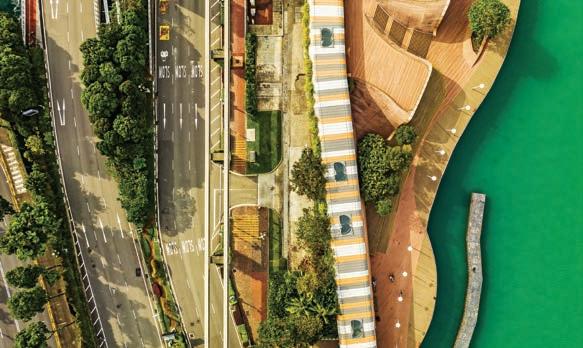 MR KOH PIAK HUAT Divisional Director, Operations, of Sentosa Development Corporation
The striking Sentosa Boardwalk has won awards for its design. It was the first garden-themed boardwalk to open in Southeast Asia and features lush landscapes enhanced by spectacular views of the harbour. Beneath its covered canopy is a series of travelators, for those interested in shortening the 15-minute stroll across the water.
MR KOH PIAK HUAT Divisional Director, Operations, of Sentosa Development Corporation
The striking Sentosa Boardwalk has won awards for its design. It was the first garden-themed boardwalk to open in Southeast Asia and features lush landscapes enhanced by spectacular views of the harbour. Beneath its covered canopy is a series of travelators, for those interested in shortening the 15-minute stroll across the water.
75 UNENDING DISCOVERIES
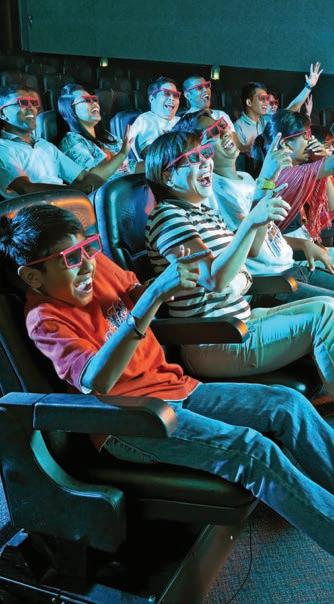

76 THE SENTOSA STORY

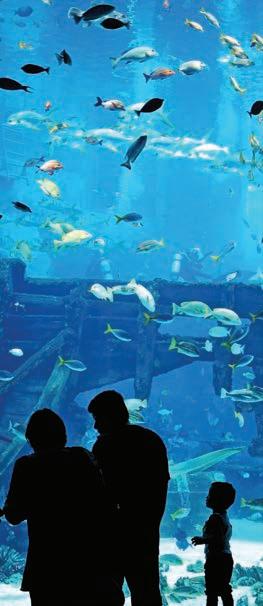
77 UNENDING DISCOVERIES

78 THE SENTOSA STORY
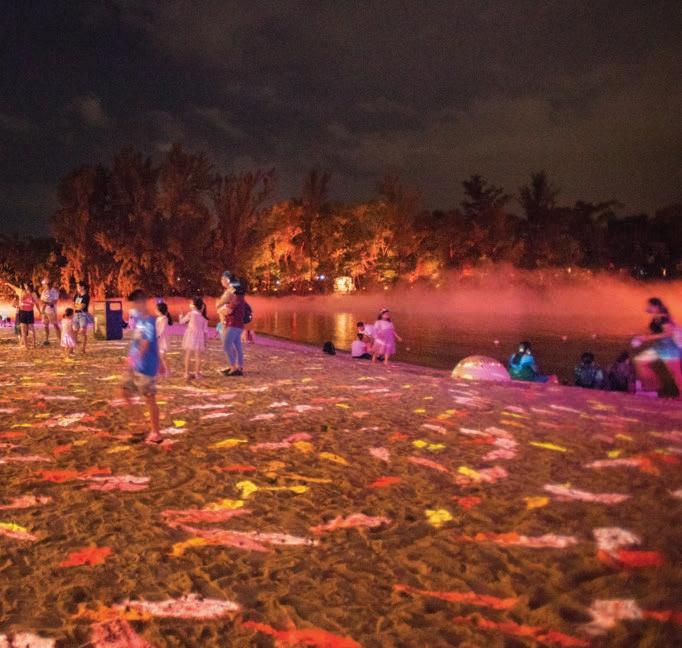
79 UNENDING DISCOVERIES
Opened in 2020, Magical Shores on Siloso Beach is a multi-sensory experience, using light and sound to transform the beach.

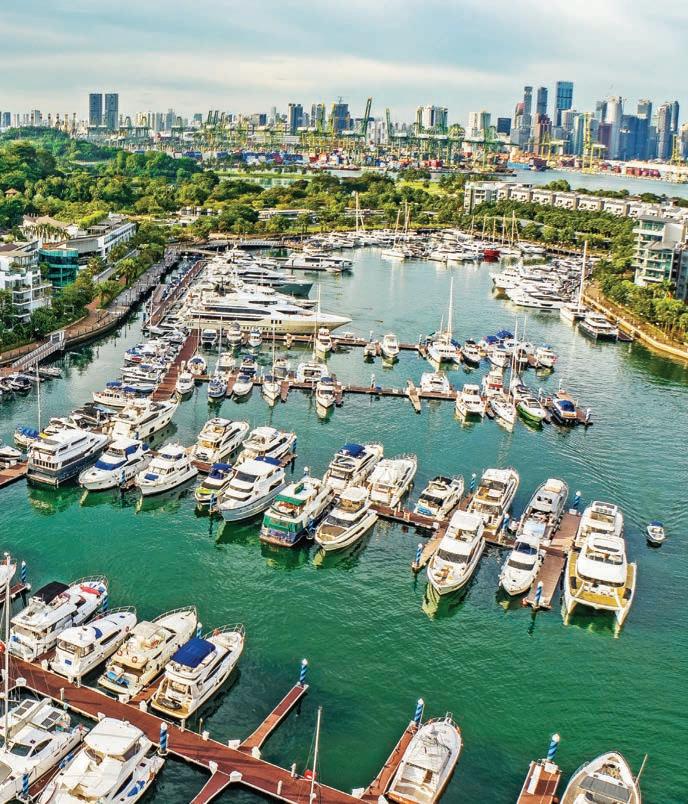 Sentosa Cove is one of Singapore’s most premium addresses, with its unique waterfront lifestyle setting flanked by the ONE°15 Marina, which has been named the Best Asian Marina at the Asia Boating Awards multiple times.
Sentosa Cove is one of Singapore’s most premium addresses, with its unique waterfront lifestyle setting flanked by the ONE°15 Marina, which has been named the Best Asian Marina at the Asia Boating Awards multiple times.
the island Growing new shape and giving it

3 82 THE SENTOSA STORY
CHAPTER
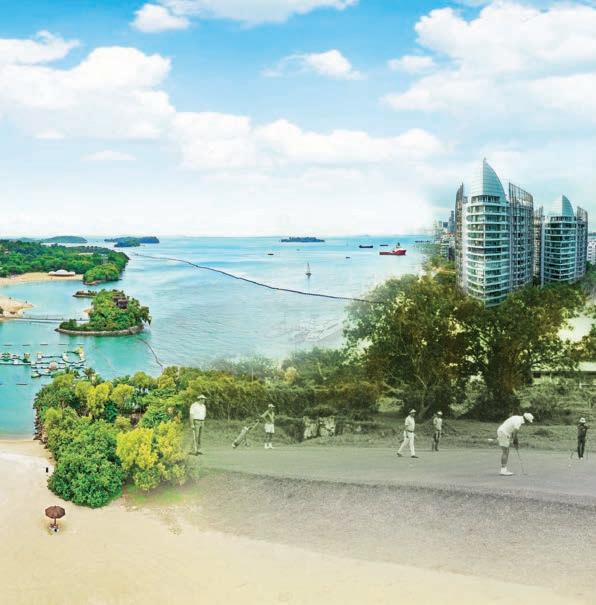

83 UNENDING DISCOVERIES
Sentosa has become a top recreational attraction for both Singaporeans and tourists… Its tranquil ambience offers an escape from the hustle and bustle of everyday life in our city. Visitors can discover forests and beaches whose original beauty has been preserved and even enhanced… The challenge will be to preserve Sentosa as a tranquil, unspoilt retreat.
PRIME MINISTER LEE HSIEN LOONG, then-Minister for Trade and Industry and Second Minister for Defence, at the opening of Sentosa’s new ferry terminal on 4 November 1988
84 THE SENTOSA STORY
 Sentosa Golf Club’s Tanjong Course, which opened in 1974 and has undergone redevelopment and a redesign to host large tournaments and offer championship-level play.
Sentosa Golf Club’s Tanjong Course, which opened in 1974 and has undergone redevelopment and a redesign to host large tournaments and offer championship-level play.

86 THE SENTOSA STORY
A suspension bridge leads out from Palawan Beach to a very small island that is considered the southernmost point of Continental Asia. On the islet is a watchtower offering bird’s-eye views of the beach as well as ships passing through the busy port of Singapore.
Reclaiming land for new developments
Developing beaches on the southern shore
Although Sentosa had the makings of a tropical island resort, in the beginning, it lacked picture-perfect beaches and safe swimming areas for visitors to enjoy. As such, one of the first attractions developed by SDC was the beach and swimming lagoon at Palawan in 1974.
With the city skyline out of view, a spot near the middle of the southern shore was the ideal location for the new lagoon, but required reclamation works to transform it into a safe place for swimming. The floor of the lagoon was created by dredging and shaping an area of seabed
300 to 400 feet wide. An existing offshore island provided a partial buffer from the sea, and berms were built to help enclose the space. Shark nets were strung between the berms to further protect swimmers.
The result was a 34-acre lagoon with a maximum depth of about six feet at low tide, complemented by a three-quarter-mile-long beach for leisure and recreation. Guests could also venture to the offshore island via timber bridges leading from the beach and between the berms, which had pedestrianfriendly palm-lined walkways.
Singapore has more than 60 islands, with Sentosa being the 4th-largest apart from the mainland, at around five square kilometres.
Know
YOU 87 UNENDING DISCOVERIES
? DID
Palawan Beach Lagoon was an idyllic recreational attraction that drew mainly local residents to Sentosa in its early years. It continues to be a popular staple of the island, and was recently revamped to offer new amenities and recreational opportunities, particularly for families with children.
Constantly striving to expand offerings for visitors, SDC developed two other beach areas on the island, Siloso and Tanjong, through additional reclamation works along the southern seashore in the 1990s. As with Palawan,
these have since been upgraded to offer distinct experiences for beach-goers. Today, the three beaches offer a combined 3.2 kilometres of golden sand stretches for visitors to enjoy. Sentosa’s three beach areas benefit more than just guests. They are home to a variety of biodiversity, including birds, eagle rays and ghost crabs, and serve as nesting spots for sea turtles – a testament to SDC’s commitment to prioritising conservation even as it pursued development through reclamation.
 Palawan Beach Lagoon drew scores of people to Sentosa after its opening in 1974. Although man-made, the site’s mature vegetation was conserved as much as possible during the reclamation and development works. This helped to retain the rustic vibe that charmed guests to the island.
Palawan Beach Lagoon drew scores of people to Sentosa after its opening in 1974. Although man-made, the site’s mature vegetation was conserved as much as possible during the reclamation and development works. This helped to retain the rustic vibe that charmed guests to the island.
88 THE SENTOSA STORY
Siloso Beach has more than just fun and thrilling attractions – its lush landscape has been purposefully planted with palms and flowering plants that attract native birds, butterflies and other fauna.

At Tanjong Beach, amenities have been carefully harmonised with the environment, such as shelters built with rustic timber shingles and kampong-style attap roofs. Known for its tranquil and calm environment, it has also been a nesting site for Critically Endangered Hawksbill Turtles. In 2018, more than 100 baby turtles hatched here in the fourth such event recorded on Sentosa since 1996.

89 UNENDING DISCOVERIES
Making links on the northern coast
From 1979 to 1980, the island grew in size with the reclamation of two small islands between Sentosa and the Singapore mainland. Sitting just off the northern coast of Sentosa, Sarong Island was about the size of three football fields. Pulau Selegu was situated a little farther into the sea and smaller than Sarong.
Sarong Island had an interesting history as a resort destination even before the advent of Sentosa. Originally unnamed, it was identified on maps by its ‘White House’, a three-bedroom bungalow built on a hill by Mr Frank Blackwood Sewell, the Senior Superintendent of Surveys of the Straits Settlements from 1927 to 1932.
In the late 1950s, the house and island were purchased by Ms Christina Lee, a well-known socialite who loved the island so much that she opened it as a tourist resort in 1967. However, the endeavour was short-lived and the resort closed within a year. Although the island attracted guests, it was challenging to visit in the rainy season due to a lack of infrastructure, deterring tourists during part of the year and rendering it unsustainable as a business venture.

Sarong Island and Pulau Selegu were reclaimed to make room for a tower for the cable car system linking Sentosa to the mainland. The additional land mass also
accommodated new attractions to increase visitorship at night, including the popular Musical Fountain developed in the 1980s and a kelong housing a seafood restaurant.
Reclamation of other areas around Sentosa’s northern shore enabled the expansion of the Sentosa Golf Club (SGC) in 1982 with its second 18-hole course, Serapong. Additional reclamation projects at Kuching Creek and a tiny islet called Berhala Reping in the 1990s allowed further improvements to SGC’s assets.
From SGC’s opening in 1974 with its first course, Tanjong, it has grown to become a world-class golf club not just through physical expansion but continual effort and regeneration to stay ahead of the game. It has hosted highprofile professional and amateur tournaments, drawing international star players and renowned golf professionals from across the world.
In 2020, SGC became the first golf club in the world to join the United Nation’s Sports for Climate Action initiative, further demonstrating its excellence as a champion of sustainability. It also took the title of World’s Best Eco-Friendly Golf Facility for the third year running at the World Golf Awards in Abu Dhabi in 2022, and has pledged to become the world’s first carbon neutral golf club.

90 THE SENTOSA STORY
Persistence and a healthy work culture have been the keys to our success. We’re like one big family where the staff would do anything for one another, and that has allowed us all to take ownership and pride in solving problems together.
General Manager of Sentosa Golf Club, on its status as one of the world’s best golf clubs

 Reclamation works along Sentosa’s northern coast allowed the construction of the Sentosa Golf Club’s Serapong Course, considered one of the best in the world. In 2022, it was ranked 55 on Golf Digest’s list of the 100 Greatest Golf Courses in the World, and also won the title of Asia’s Best Golf Course at the World Golf Awards.
MR ANDY JOHNSTON
Reclamation works along Sentosa’s northern coast allowed the construction of the Sentosa Golf Club’s Serapong Course, considered one of the best in the world. In 2022, it was ranked 55 on Golf Digest’s list of the 100 Greatest Golf Courses in the World, and also won the title of Asia’s Best Golf Course at the World Golf Awards.
MR ANDY JOHNSTON
91 UNENDING DISCOVERIES
Located near Sentosa, Sarong Island briefly had a life as an island resort in the 1960s. It was later reclaimed and added to Sentosa’s land mass.
Building a high-end residential community on the east side
Sentosa’s most extensive development project involved reclamation at the adjacent islet of Buran Darat and the narrow but deep channel of water between it and the eastern portion of Sentosa. The reclaimed land paved the way for the prestigious Sentosa Cove development, which SDC pursued to elevate Sentosa’s branding as a resort island and cement its position as a major tourist attraction in Singapore and the region.
The vision for Sentosa Cove was an exclusive development with hotel and residential housing, a yacht club and a marina. As Sentosa evolved into a leading leisure destination, Sentosa Cove would be the residence of choice for those who would enjoy having an island resort as their playground. In 1986, the Government agreed that SDC should proceed with the
reclamation project to create more land for residential development on Sentosa.

The area of the channel between Sentosa and Buran Darat that was too deep to fill in entirely was earmarked for the future marina. With that, reclamation works began in 1991, with the challenging task of draining the channel so that the marina walls and basin could be created.
To accomplish this, bunds were set up on either end of the channel between the two islands, and the water was temporarily diverted into a new waterway that opened to the sea. When the area was dry, the marina walls were created by infilling behind the bunds, and the basin floor was made by reshaping the seabed.
92 THE SENTOSA STORY
The reclamation of Buran Darat added about 86 hectares to Sentosa’s eastern shore, allowing for the addition of new residences in land-starved Singapore, and a host of ultra-luxe developments that elevated Sentosa’s branding.
To minimise the impact to the channel’s marine life, SDC worked with marine conservationists to relocate corals and sponges to a new site on Sentosa’s southern shore.
With the reclamation works underway, Mr Bernard Spoerry was appointed as a consultant to draw up a master plan to define the new development’s waterfront character. The Sentosa Cove Master Plan, which proposed Singapore’s first canal housing estate and one of the region’s largest marinas, was approved by the Government in 1993.
This master plan, which initially conceived of the development as a Mediterranean-style marine village, was later refined to fit into the Asia-Pacific context. The final version that emerged in 1996 would transform the basin and surrounding reclaimed land into a series of islands with canals between them. Unfortunately, the 1990s property slump and 1997 Asian Financial Crisis paused the construction of Sentosa Cove, delaying its opening until 2003.

93 UNENDING DISCOVERIES
Sentosa Cove’s luxurious waterfront community is integrated with canal waterways and surrounded by the sea.
SENTOSA COVE
Luxe living by the sea
When Sentosa Cove opened in 2003, it introduced a residential profile to Sentosa that did not exist before. Breaking all conventions and pushing the boundaries of what was possible, the 117-hectare gated enclave made use of the foreshore to become the only waterfront community of its kind in Singapore.
As with its development, SDC helped to make Sentosa Cove a success by thinking outside the box when it came to marketing and land sales. From the start, land parcels were released in phases to stimulate demand and appreciate the price of land. An international marketing campaign in 2004 generated interest on the global market, while an auction of oceanfront, waterway and fairway land parcels
in 2006 propelled Sentosa Cove to international prominence on an unprecedented scale.
Another approach was the use of the private-sector sales method of awarding land parcels by Expression of Interest. This opened up the development of land parcels to firms that would ordinarily not participate in tender exercises, by giving them an opportunity to put in no-risk bids that were non-binding until the deal closed. This led to the development of boutique housing collections within Sentosa Cove.
Today, the oceanfront villas, mansions and condominiums that make up Sentosa Cove’s 2,600 residences are sleek and elegant examples of architectural refinement. Boasting sweeping
 Sentosa Cove offers a casual waterfront lifestyle close to the busy mainland of Singapore (shown in the background).
Sentosa Cove offers a casual waterfront lifestyle close to the busy mainland of Singapore (shown in the background).
94 THE SENTOSA STORY
panoramas and stunning sea vistas, they are also the epitome of waterfront living.
Incorporated into the development is a marina which today offers 270 wet berths and the ability to accommodate 32 mega-yachts. Part of the prestigious ONE°15 Marina Sentosa Cove project, the world-class marina’s facilities are accompanied by high-end restaurants and an exclusive club for members.
Sentosa Cove has been recognised for its efforts in providing greenery and ecologically friendly landscapes. It was one of six existing developments in Singapore in 2015 to obtain the Landscape Excellence Assessment Framework certification by the National Parks Board.
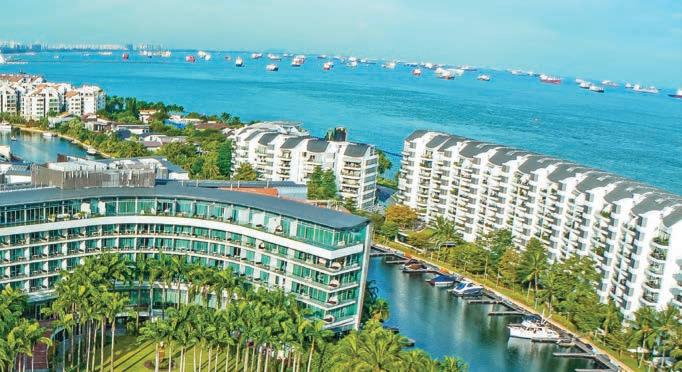

95 UNENDING DISCOVERIES
Sentosa Cove’s beautiful marina has 270 wet berths and the capacity for 32 mega-yachts.


96 THE SENTOSA STORY

97 UNENDING DISCOVERIES

98 THE SENTOSA STORY

99 UNENDING DISCOVERIES
Guests can ‘fly’ 450 metres over the jungles and beaches of Sentosa, at the MegaZip attraction at the Mega Adventure Park, which opened in 2009.
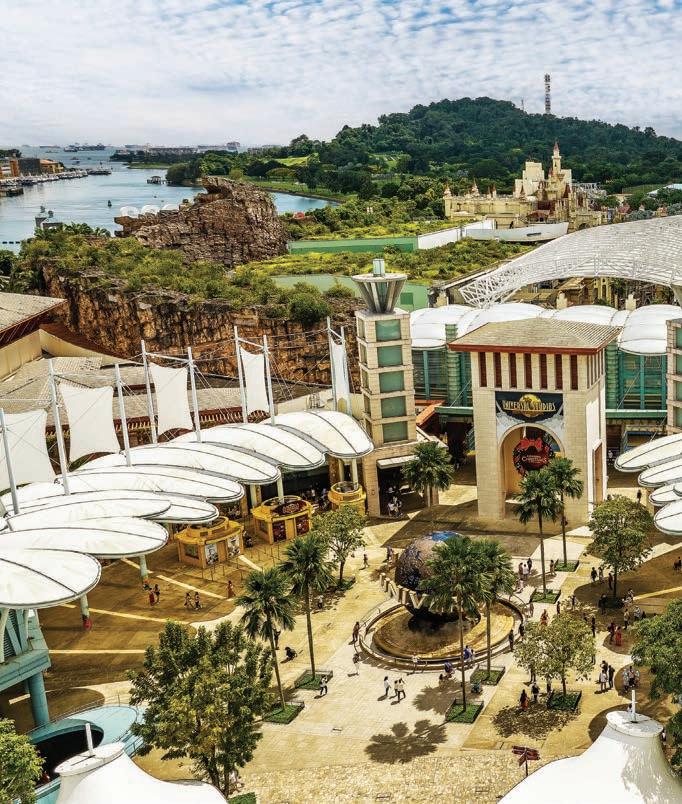
After Resorts World Sentosa opened its doors in 2010, visitorship to the island more than doubled. Visitor numbers surged to over 19 million by 2012 from an earlier base of six to seven million visitors a year.

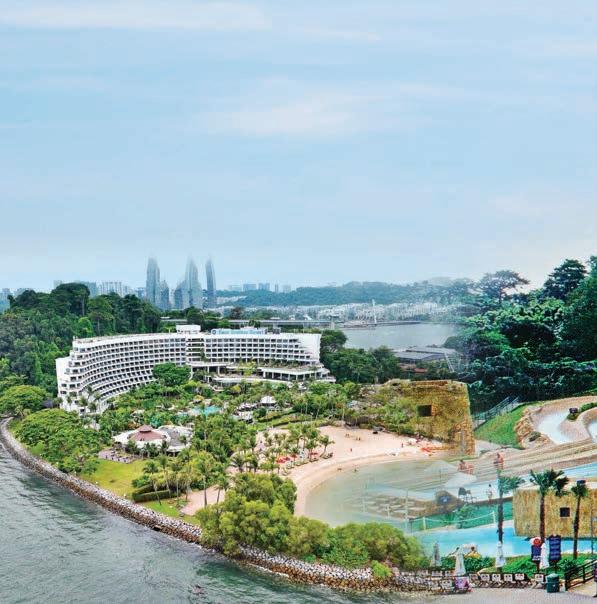



102 THE SENTOSA STORY
Transforming the island

CHAPTER 4 103 UNENDING DISCOVERIES
Several key aspects of Sentosa mark its distinctive appeal. It is a nature park, themed entertainment and fun island resort rolled into one. Tourists and locals visit the numerous themed attractions, golden beaches and rich heritage preserved on the island and enjoy a range of leisure pursuits like beach volleyball, cycling, in-line skating and swimming… For a place with as diverse a product portfolio as Sentosa, changes or refreshment must occur in many areas – in fact, across all key success factors.
104 THE SENTOSA STORY
MR PEK HOCK THIAM, then-Chief Executive Officer of Sentosa Development Corporation, sharing the story of Sentosa’s development at an international conference on 4 November 2000
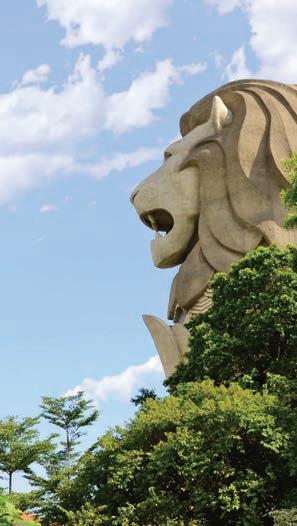 The Sentosa Merlion, a favourite of visitors for over two decades from 1996 to 2019.
The Sentosa Merlion, a favourite of visitors for over two decades from 1996 to 2019.

106 THE SENTOSA STORY
Over the course of five decades, Sentosa has transformed into a vibrant and exciting resort destination that rivals any other in the world.
Evolving as a leisure destination through continual renewal of attractions and other offerings
Making a rustic retreat in the 1970s and 1980s
Today, Sentosa is a world-class leisure destination and Singapore’s premier island getaway. This took sustained effort by SDC and its island partners. Over the past five decades, Sentosa has undergone continual renewal, guided by a vision that evolved as Singapore itself developed and the face of tourism changed, but always underpinned by intentional planning and a focus on the visitor experience.
When Dr Winsemius and Mr Choe petitioned the Government to set aside the island as a leisure destination in the late 1960s, they saw its value as a green lung for the nation and a backyard playground for Singaporeans. The
first master plan in 1970 was laid out with this in mind, even as it aimed to complement Singapore’s economic strategy of promoting tourism as a key pillar of growth. With Sentosa’s location next to Singapore’s mainland, SDC marketed the island as ‘a convention centre and perfect holiday retreat’, where people could get away from the pressures of work, but still be close enough to the city to conduct business. The cable car’s opening in 1974 made it a jaunt from the mainland, and amenities such as conference facilities and the Sentosa Golf Club’s course anchored the island as a work-pleasure paradise.
107 UNENDING DISCOVERIES
The majority of visitors back then were local residents seeking leisure opportunities in their own backyard. They came by the thousands, to attractions like the Coralarium, Maritime Museum and Gun Museum at Fort Siloso, but also to enjoy simpler pleasures amidst the island’s unspoilt beauty. Whether lazing on the beach, having fun in the sea or enjoying a picnic, Sentosa offered a rustic retreat from the mainland.

SDC balanced the development of new attractions with recreational amenities such as a roller-skating complex and a field for sports and athletics. Kiosks were put up around the island to offer rental bikes, refreshments and beach umbrellas, and a campground was built near the sea.
While the Apollo Sentosa hotel offered more comfortable lodgings indoors, the campground was the perfect setting for an inexpensive overnight stay on the island. Lit at night with torches, and with barbeque pits, it was a picture of tropical island simplicity. Alternatively, guests could stay in self-contained beach chalets or, from 1978, at a youth hostel for $8 per day for two people, or $10 on weekends and public holidays.
Sentosa in the 1970s and 1980s charmed visitors with its rustic nature, which SDC protected as it guided the island on the first steps toward development. Under SDC’s care, Sentosa pulled in a growing number of visitors over this period, from 0.66 million in 1974 to 1.64 million in 1985, while retaining the island’s heart and soul.

108 THE SENTOSA STORY
In the 1970s and 1980s, Sentosa’s visitors were mostly locals looking for a break from their daily lives. Its rustic charm was its most attractive feature, and favourite activities were simple ones that centred around outdoor recreation.



109 UNENDING DISCOVERIES
Opened in 1995, Volcano Island featured an active ‘volcano’ and took visitors on a subterranean adventure to the centre of the Earth. The attraction was part of a cluster of centrally located mid-sized theme parks that were popular in the mid1990s.

Together with Fort Siloso, the Sentosa Merlion and the Musical Fountain, the Images of Singapore helped to pull in crowds during the 1990s. It also served a diplomatic function. Every year, around Chinese New Year, the Menteri Besar of Johor visited the attraction, and SDC staff hosted dinner for a huge delegation of ministers from Singapore and Malaysia, helping to cement a close relationship between the two countries.

110 THE SENTOSA STORY
Becoming a first-class resort island in the 1980s and 1990s

With the growth in visitor arrivals by the mid-1980s, Royston Hanamoto Alley & Abey, a wellknown overseas architecture and planning firm, was appointed to propose a new phase of development. The new master plan that emerged in 1985 sought to make Sentosa a first-class resort island worthy of repeat visits by Singaporeans, and a must-visit place for tourists. It aimed to grow visitorship by providing an array of distinctly different offerings.
New attractions and other developments were organised along a north-south axis across the island, connecting guests arriving by ferry in the north with the popular beach area in the south. Clustered along the axis were mid-sized theme parks such as the Fantasy Island

waterpark, Mayan-themed Volcano Island with its artificial volcano, and Asian Village, an edutainment type of attraction that highlighted different cultures in the region.
Also arising during this period was the popular Images of Singapore. It comprised three separate attractions – the Pioneers of Singapore and Surrender Chambers, which were completed in 1984 and traced aspects of Singapore’s history through interactive displays and interpretive exhibits, and the Festivals of Singapore, which opened in 1995 and showcased local cultural diversity using animatronic figures and other special effects. Underwater World, in the island’s north-western stretch near Fort Siloso, featured an oceanarium to showcase marine life.
In its first seven months of operation in 1991, Underwater World attracted one million visitors. One highlight was a 100-m-long transparent underwater tunnel that allowed visitors to view marine life in two large aquariums.
Know? DID YOU 111 UNENDING DISCOVERIES
The Musical Fountain hosted the inaugural World Trade Organisation summit’s closing ceremony in 1996. Ms Sarah Brightman sang at the event, wearing a $2-million diamond necklace that required tight security.
We’ve been ahead of the game in many ways, from our Musical Fountain show to our Merlion which had lasers shooting out of its eyes. For many of our attractions, we were doing these things for the first time.
MR EDWARD KHOO
Chief Architect (Special Projects), of Sentosa Development Corporation, who provides master planning and design inputs for Sentosa’s developments
The Sentosa Merlion strengthened the island’s identity when it opened in 1996. Its head was turned toward Singapore’s mainland to give a sense that it was blessing the nation and looking after its well-being. People loved to take pictures by the large Sentosa welcome signage, with the Merlion in the background setting the scene for postcard-worthy photographs. The beloved attraction was closed in 2019 to make way for Sentosa’s next phase of development.
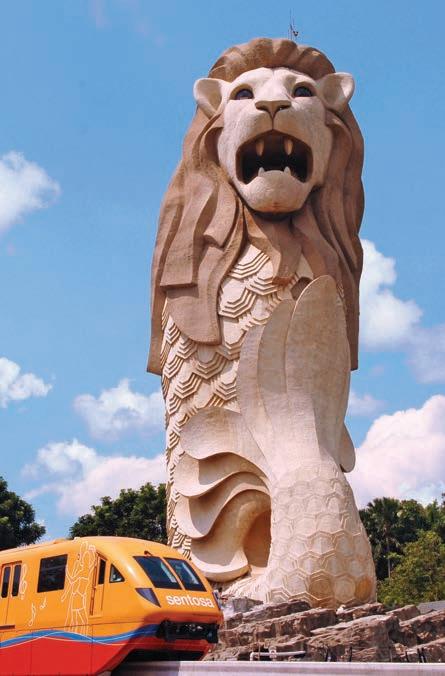
112 THE SENTOSA STORY
Several developments in this period have been carved into the memories of a generation of Singaporeans. One of the most beloved was the Musical Fountain, which synchronised water sprays that ‘danced’ to classical tunes. Projecting images across a screen of water for the first time in Southeast Asia, it was a key attraction that extended entertainment options for guests into the night. The fountain’s shows also served a diplomatic function, with SDC staff working with various embassies to incorporate their national or folk songs during State visits.

The Sentosa Merlion, unveiled in 1996 toward the end of this phase of development, became a landmark that strengthened the island’s identity. At 37 metres in height, it was the tallest sculptured viewing tower when it opened, and the tallest Merlion statue in Singapore. With laser lights shooting out of its eyes, it delighted visitors. In a nod to Sentosa’s reported history with piracy, the interior of the Merlion’s head was designed as a ‘cave’ with ‘treasure’. Against this backdrop, guests were treated to the story of Sang Nila Utama’s discovery of Singapore, as told by a pirate projection achieved through the use of a ‘pepper’s ghost’ optical illusion.
Know? DID YOU
The Musical Fountain opened in 1982 and initially consisted of a swan-shaped main pool, two terrace pools, and a viewing gallery. The computer-controlled fountain could display 16 different synchronised water formations that ‘danced’ to familiar tunes. In the late 1990s and 2000s, the shows evolved with the use of special effects such as video projections, multiple lasers, water explosions and pyrotechnics. A Sentosa icon for 25 years, it was replaced by the $30-million Songs of the Sea multi-sensory show in 2007.
In 2012, a team of cleaners took 10 days to scrub the 37-m-tall Merlion, rappelling down from its head to get rid of dirt and apply preservative chemicals.
113 UNENDING DISCOVERIES
SDC organised promotions and events to boost visitorship, with some designed to coincide with Singapore’s school holidays to attract locals. It also broadened the range of recreational options with new offerings such as horseback riding. Two hawker centres were built to offer local fare – the Rasa Food Centre in 1982 and the Sentosa Food Centre in 1993 – while the new ferry terminal plaza that opened during this period brought even more food options to the island.
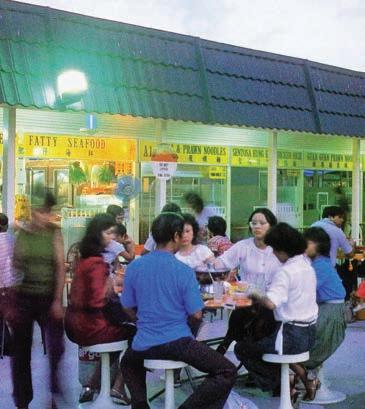

New accommodations catered to a variety of guest types. At Siloso Beach, the family-friendly ShangriLa Rasa Sentosa broke new ground as the first beachfront resort on the island. Indeed, it is still the only hotel which is right on the beach in Singapore. On the hill above the beach, the NTUC Beach Resort presented affordable hotel rooms and rustic beach-style huts. Later renamed the Costa Sands Resort, it had a long run, operating from 1993 until 2018.
The new attractions and hotels built during this period dramatically increased visitorship, which reached 4.1 million visitors in 1996. With more diverse offerings on the island, the demographic also started to change, from a mostly local visitor base in the 1970s and 1980s, to tourists comprising about half of arrivals by the mid-1990s.
The Shangri-La Rasa Sentosa expanded the range of familyfriendly activities and accommodations on the island.
114 THE SENTOSA STORY
Dining beneath the stars at Rasa Food Centre, 1982.

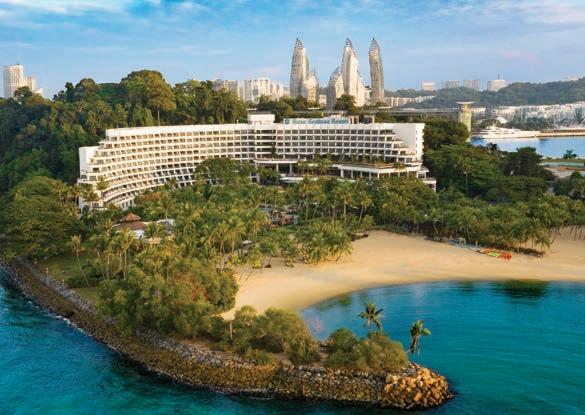
115 UNENDING DISCOVERIES
Top and bottom: When the Shangri-La Rasa Sentosa opened in 1993, it offered the first beachfront accommodation on the island.
Transitioning to a world-class resort destination in the 1990s and 2000s
Sentosa’s visitorship might have continued to soar in the second half of the 1990s, but for the Asian Financial Crisis which began in 1997. The decline in tourism and lack of new investments in hotels and attractions hit Sentosa hard.

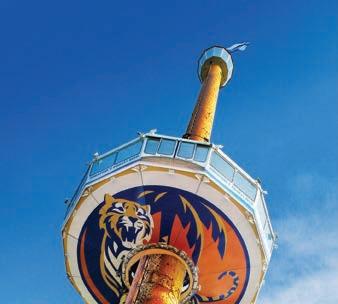
In response, the Ministry of Trade and Industry mooted an International Advisory Council for Sentosa in 1999 to discuss new ideas for the island. This led to the formation of a Sentosa Review Committee to reconsider the positioning of the island. Led by then-SDC Chairman Mr Philip Ng, and taking reference from points raised by the advisory council, the committee reframed the vision for Sentosa to become a world-class lifestyle and leisure destination. The report that arose from their work was the foundation for a new master plan in 2002.
Drawn up by the firm McKerrell Lynch (now known as ML Design), the 2002 Master Plan entailed a major overhaul to position Sentosa as a family resort destination. The key intent of the new plan was to create a vibrant and exciting environment for Sentosa, with a focus on leisure and accommodation, as well as sophisticated and unique dining and entertainment options for guests.
The island’s attractions were to be further clustered into three distinctly-themed zones. In the south, the beaches would be overhauled into a new zone with diverse offerings for each of the three beaches. The centre would be transformed into an activity hub around Imbiah Lookout, with attractions focused on history and edutainment. The northern waterfront area was planned to become a new theme park zone.
Operating from 2004 until 2018, the Tiger Sky Tower (previously known as Carlsberg Sky Tower) was the highest observation tower in Singapore. Standing at a height of 131 metres above sea level, it offered 360-degree views encompassing Singapore’s entire skyline, and part of Johor Bahru could be seen on a clear day.
116 THE SENTOSA STORY
The Mega Adventure Park has been delighting visitors since 2009. It features three activities – MegaZip, with a zipline extending 450 metres from Imbiah Lookout to Siloso Beach; MegaClimb, offering treetop obstacle courses; and MegaBounce, with its 8-m-high bungy trampolines on Siloso Beach.
A flurry of new attractions sprang up to appeal to local visitors and tourists alike, extend guests’ stay, and add to the Sentosa experience. Some of these offered one-ofa-kind experiences at the time, such as the Sentosa 4D Magix, Singapore’s first and Southeast Asia’s original 4D theatre; Mega Adventure Park, with a zipline that
hurtles riders from the jungle to the sea at speeds up to 60km/hour; Wave House Sentosa, with its high-barrelling wave simulator, the first of its kind in Singapore; and iFly Singapore, which offered not just the only indoor skydiving simulator in Singapore, but the world’s largest when it opened.

The Sentosa 4D Magix debuted in January 2006 and offers virtual adventures through the use of 4D technology. Today, it features four different adventures – a haunted mine ride, extreme log ride, interactive Old Western shoot-out game, and Journey 2: The Mysterious Island attraction.

Opened in 2011, iFly Singapore is a thrilling attraction that uses a wind tunnel to create the conditions for a real-life free-fall experience.
The Skyline Luge Singapore was called the Sentosa Luge and Skyride when it began operations in 2005. The family-friendly attraction now offers four purpose-built tracks that passengers can careen down with the help of gravity.


117 UNENDING DISCOVERIES
The transformation of the beach recreation zone was helped with a makeover of Palawan Beach in 2006 to offer new food, retail and entertainment options, including family-friendly activities and attractions. This was enhanced in 2011 by the completion of a water play area called Port of Lost Wonder, which attracted many families with young kids. Benefitting from an increase in footfall from the sea-view residences at nearby Sentosa Cove, Tanjong Beach was revitalised with a new restaurant, infinity pool and stylish bar that opened as part of the Tanjong Beach Club in 2010. At Siloso Beach, Songs of the Sea offered a new night-time attraction with its high-tech water, fire and laser spectacular to replace the iconic Musical Fountain built in the 1980s.
With the completion of beach reclamation works at all three beaches in the late 1990s, targeted programming of events soon became possible with the wider and longer connected areas of sandy beaches. The new beachside developments and upgrades were complemented by targeted programming of events that SDC had begun in the late 1990s. Sentosa Sandsation premiered at Siloso Beach in June 1999 as Asia’s first international sand sculpting competition, while ZoukOut Singapore was launched in 2000 and has become Asia’s longest running dance music festival. This period also saw the introduction of night-time foam parties that have become a trademark of the island, as well as the Siloso Beach year-end party, which is one of the biggest countdown parties in
Southeast Asia and features Asia’s finest DJs and dazzling fireworks displays to ring in the new year.

More varied midscale and upscale accommodations were developed to encourage visitors to spend more time on the island. In addition to heritage hotels that opened during this period on Sentosa’s ridgeline, the Siloso Beach Resort emerged in 2006 as a new beachside option.
Despite the global economic downturn at the end of this period, the developments that arose during this phase of development moved the visitorship needle, with Sentosa receiving about six million guests in 2009.
118 THE SENTOSA STORY
The first ZoukOut Singapore beach dance party was held on Sentosa in 2000, with subsequent editions attracting tens of thousands of revellers. As Asia’s longest running dance music festival, the dusk-to-dawn event pulls in crowds with top-notch local, regional and global acts, in the midst of a festival ground with custom installations, roving acts and spectacular stage designs.
Whatever we do, we must think local first. When foreign tourists come to visit, they want to go where the locals go for that authentic local experience. Thus, we hope to create events that are creative, original and true to us.
MR JIMMY WONG Director, Events & Programming, of
Development Corporation

 Songs of the Sea won the prestigious Thea Award for Outstanding Achievement for Event Spectacular and the ASEANTA Award for Best ASEAN New Tourist Attraction.
Fronting the beach, the Siloso Beach Resort was designed with nature integrated into the hotel, and a swimming pool that uses natural spring water.
Songs of the Sea won the prestigious Thea Award for Outstanding Achievement for Event Spectacular and the ASEANTA Award for Best ASEAN New Tourist Attraction.
Fronting the beach, the Siloso Beach Resort was designed with nature integrated into the hotel, and a swimming pool that uses natural spring water.
119 UNENDING DISCOVERIES
Sentosa
Refining and improving further in the 2000s, 2010s and into the 2020s
By 2008, Sentosa’s northern waterfront area was on the path to becoming an integrated resort complete with a casino. The road to this point was not straightforward, though, as casinos were not even an option in Singapore until 2004, when the Government raised the prospect of lifting a longstanding ban on them.
After a period of in-depth study on the multi-faceted impact of casinos, coupled with industry and stakeholder dialogues, the Singapore Tourism Board published requests for proposals to develop casinos at two different sites – one at Marina Bay and the other on Sentosa. The requests were staggered, with the first published on 15 November 2005 and the second on 28 April 2006.

There were three bidders for the Sentosa site, which was to house a more familyoriented integrated resort – Genting International, Eighth Wonder, and Kerzner International with CapitaLand. The project was eventually awarded to Genting International on 8 Dec 2006 to build what is today Resorts World Sentosa (RWS).



Hotel 120 THE SENTOSA STORY
Crockfords Tower
Hard Rock
Alongside the exciting tourist attraction Universal Studios Singapore, and the Resorts World Sentosa (RWS) casino, RWS also opened six new hotels for the island.
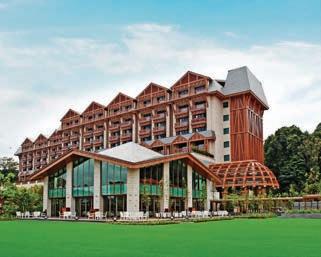



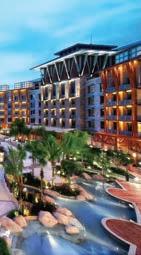
 Equarius Hotel
Equarius Villas
Equarius Hotel
Equarius Villas
121 UNENDING DISCOVERIES
Hotel Michael
When RWS opened in 2010 as Singapore’s first family-friendly integrated resort, it was a gamechanger for Sentosa. Under its umbrella were the first and only Universal Studios theme park in Southeast Asia, the first casino to be opened in Singapore, the world’s largest oceanarium at the time, an exciting new waterpark, and six new hotels for the island.
RWS drew a cascade of regional tourists and fulfilled many wishes that people had for Sentosa, as expressed to the Sentosa Review Committee during engagement sessions with the public and stakeholder groups. It was also
a huge success in that it tripled Sentosa’s visitorship from six million in 2009 to 19 million by 2012.

Even so, SDC did not rest on its laurels. With more recreational and tourism options becoming available locally and regionally, it anticipated that consumers’ expectations would continue to rise. Asian tourists, who made up a large proportion of foreign visitors to Sentosa, were travelling more globally and being exposed to other world-class offerings. If Sentosa did not keep up with the competition, it would lose market share over time.
Know? DID YOU
Resorts World Sentosa’s S.E.A. Aquarium is one of the world’s largest oceanariums. It houses over 100,000 sea creatures in 45 million litres of water, and has the world’s largest viewing panel, at 36 metres by 8.3 metres.
When it opened, Universal Studios Singapore offered 24 rides and attractions that were grouped within seven different themed zones.
122 THE SENTOSA STORY


123 UNENDING DISCOVERIES
RWS’s Marine Life Park comprises the S.E.A. Aquarium (bottom), which was the world’s largest oceanarium at the time it opened, and the Adventure Cove Waterpark, with Southeast Asia’s first hydro-magnetic water slide, a lazy river (top), and a tank for guests to snorkel alongside marine fish.
To address the changing tourism landscape and ensure that Sentosa remained relevant and exciting while reinforcing its international standing, Sentosa went through multiple rounds of concerted refinements in the wake of RWS’s opening.
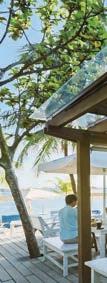


The aim was to leverage on the potential to increase the spillover of guests from RWS onto the rest of the island and broader Singapore, thus driving up tourists’ average spend and length of stay. This led to the consolidation of a critical mass of ‘best-inclass’ offerings at the heart of Sentosa, even while staying true to a commitment to preserve the unique nature, history and cultural heritage of the island.
During this period of refinement, new developments continued to appear on the island. At Sentosa Cove, the W Singapore hotel added new luxury accommodation for guests, while the Quayside Isle shopping centre opened with an array of specialty retail stores and premium dining options. C Side enriched Siloso Beach’s casual vibe with its array of five unique restaurants, offering guests the opportunity to dine with their feet in the sand. At Palawan Beach, FOC Sentosa, a new beach club and restaurant, provided exquisitely prepared Mediterranean cuisine by the beach.
Sentosa further entrenched its reputation as a luxurious lifestyle destination when the W Singapore Sentosa Cove hotel opened its doors in 2012 with 240 sea- and marina-facing guest rooms.
124 THE SENTOSA STORY
A WALK TO REMEMBER
For Mr Winston Wong, a heritage tour guide at The Barracks Hotel Sentosa, the work is a walk down memory lane. He first set foot on the island in 1968 as a combat engineer trainee in the Singapore Armed Forces, and lived as a soldier where he now plies his trade.
“When I got to the island, I thought it was exotic, with its mixture of ethnic races and the colonial population,” he said. “The officers and trainees went to the one and only coffee shop at the jetty to chat with locals, and three officers married local girls. My own first girlfriend was Rupia, a schoolteacher who lived in a Malay village.”
Life on the island was harmonious, with people looking out for one another. In the mornings, the servicemen sometimes gave up their seats on the military vessel sailing to the Singapore mainland, to school-going children and housewives with babies waiting for the less comfortable bumboats.

The camaraderie extended to a domesticated honey bear roaming free on the island. It belonged to a British major who refused to cage it. “We called it Benny the bear, and it came up to us and let us hug it when it saw us walking on the road,” Mr Wong said. When several officers killed the bear over unsubstantiated complaints that it had maimed some household chickens, the major nearly court-martialled them.
Even as Sentosa has grown into a world-class tourist destination, Mr Wong remembers its earlier days fondly, and wants to keep its past in the spotlight through his tours. He said: “There is so much history here, and we should appreciate the legacy left behind.”



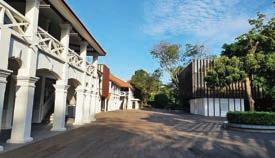 New developments at Sentosa’s beaches gave visitors more dining and leisure options. These included FOC Sentosa (top), a new beach club and restaurant at Palawan Beach, and C Side (bottom) at Siloso Beach, with its range of five unique restaurants.
New developments at Sentosa’s beaches gave visitors more dining and leisure options. These included FOC Sentosa (top), a new beach club and restaurant at Palawan Beach, and C Side (bottom) at Siloso Beach, with its range of five unique restaurants.
125 UNENDING DISCOVERIES
In 2014, SDC launched a new brand campaign, repositioning the island as ‘The State of Fun’. With a focus on strengthening the emotional connection between Singaporeans and Sentosa, it aimed to make the island more accessible and appealing to locals. The campaign also sought to refresh the image of Sentosa as a leisure destination by highlighting its vibrancy and varied fun offerings, especially with the opening of new attractions such as Madame Tussauds Singapore, the Trickeye @ Southside Singapore, and the Skypark Sentosa with its 50-m-tall bungy tower, 40-m-high Skybridge, and Giant Swing to fling thrill-seekers toward the beach at 120km/hour.

 Coinciding with Sentosa’s rebranding as ‘The State of Fun’, new attractions offered a variety of pleasures, such as Madame Tussauds Singapore (top), Skypark Sentosa with its bungy jumping and other thrilling experiences (above), Trickeye @ Southside Singapore where guests could ‘insert’ themselves into life-sized backdrops for memorable photos (facing page), and more.
Coinciding with Sentosa’s rebranding as ‘The State of Fun’, new attractions offered a variety of pleasures, such as Madame Tussauds Singapore (top), Skypark Sentosa with its bungy jumping and other thrilling experiences (above), Trickeye @ Southside Singapore where guests could ‘insert’ themselves into life-sized backdrops for memorable photos (facing page), and more.
126 THE SENTOSA STORY
Always striving to offer more and better options for visitors, the efforts of SDC and its partners have paid off. Sentosa has not only become a world-class destination, winning international awards such as the World’s Best Family Friendly Destination in 2018, but earned a place in Singaporeans’ hearts. During Singapore’s Golden Jubilee in 2015, Sentosa was unveiled as one of Singapore’s Top 50 places of significance, having been nominated by the public as a place that Singaporeans love and cherish.

Despite the COVID-19 pandemic which brought global travel and tourism to a halt, the island continued to reinvent itself through offerings that focus on wellness, experience and discovery. New attractions have also come online,
such as the SkyHelix Sentosa which launched in December 2021. Taking guests 79 metres above sea level in an open-air gondola, it is Singapore’s highest open-air panoramic ride and the first carbon neutral attraction on Sentosa. Another recent highlight was the gazettement of Fort Siloso as a National Monument in February 2022.
In the works is a new public park and multi-sensory walkway, the Sensoryscape, which is targeted for completion in 2023/2024. This will be the first milestone in the next stage of Sentosa’s development, which was announced in 2019. The new vision sees Sentosa being transformed together with Pulau Brani into the anchor for leisure and recreation within Singapore’s new Greater Southern Waterfront District.
127 UNENDING DISCOVERIES
SENTOSA’S RIDGELINE HOTELS



Giving new life to old buildings
As caretakers of Sentosa’s heritage, SDC has approached the island’s development sensitively by prioritising preservation and reuse of existing historical buildings over destroying and building anew. It curated and parcelled many of these out for development as hotels, while making it a requirement of the developers that the heritage buildings be restored and conserved.
The continued revitalisation of these structures through repurposing complements other sustainable development initiatives, such as biophilic design of the built environment and adoption of sustainable approaches towards site design and development.
 Amara Sanctuary Resort Sentosa
Capella Singapore
Village Hotel Sentosa
Amara Sanctuary Resort Sentosa
Capella Singapore
Village Hotel Sentosa
128 THE SENTOSA STORY




 Sofitel Singapore Sentosa Resort & Spa
The Barracks Hotel Sentosa
Sofitel Singapore Sentosa Resort & Spa
The Barracks Hotel Sentosa
129 UNENDING DISCOVERIES
Oasia Resort Sentosa
Sentosa’s ridgeline hotels overlook the southern shoreline, and occupy buildings once used by the British as barracks and other military facilities. Among these is the Sofitel Singapore Sentosa Resort & Spa, which comprises a colonial bungalow dating to 1906 that has been repurposed for its So Spa, as well as newer buildings that blend into the natural surroundings on the ridge. Formerly the Beaufort Hotel, it underwent several changes in ownership before being rebranded as the Sofitel in 2015.

Above Palawan Beach near the centre of the ridge are the Amara Sanctuary Resort Sentosa and the Capella Singapore, heritage hotels that opened in 2007 and 2009 respectively. The Amara’s courtyard and verandah suites were part of an extensive complex of buildings that date to 1906 and the 1920s. Its grounds are also home to the last two air raid shelters on Sentosa from World War II. At the Capella Singapore, contemporary architecture is harmoniously integrated with heritage buildings that date from 1906 and served as garrisons for the British Artillery.



1993 2006 Shangri-La Rasa Sentosa Siloso Beach Resort Beachfront Hotels Resort World Sentosa Sentosa Cove 1978 1993 Apollo Sentosa *now EtonHouse* Costa Sands Resort *demolished in 2020* In the Past Ridgeline Hotels Village Hotel Sentosa The Outpost Hotel Sentosa The Barracks Hotel Sentosa Siloso Beach Resort Shangri-La Rasa Sentosa Equarius Hotel Equarius Villas Crockfords Tower Ora Hotel Hard Rock Hotel Hotel Michael Oasia Resort Sentosa W Singapore Sentosa Cove Amara Sanctuary Resort Sentosa Capella Singapore Sofitel Singapore Sentosa Resort & Spa Note: Map not to scale 130 THE SENTOSA STORY
Clustered together nearby are a group of hotels, operated by the Far East Organization, that are housed in a combination of heritage buildings and new structures that have been sensitively integrated into the landscape.





These are The Barracks Hotel Sentosa, The Outpost Hotel Sentosa, Village Hotel Sentosa and Oasia Resort Sentosa. Several of the properties’ buildings date back to 1904, including the conserved











buildings occupied by The Barracks Hotel Sentosa, which were once used as a military outpost for British soldiers during the colonial period.
The building currently housing the convention centre at the Village Hotel Sentosa dates to 1937, and was formerly occupied by the Rare Stone Museum from 1985 to 1995. Before their current life, the Oasia Resort Sentosa’s buildings had made up Le Méridien Singapore and the Movenpick Heritage.
2010
2007 2009
Capella Singapore 2012 Equarius Villas Equarius Hotel 2012 W Singapore Sentosa Cove 2012 2016 Movenpick Heritage *now Oasia Resort Sentosa* Le Méridien Singapore *now Oasia Resort Sentosa* Oasia
2015 2019 2021 Village
Crockfords Tower Ora Hotel Hard Rock Hotel Hotel Michael
Amara
Sanctuary Resort Sentosa
Resort Sentosa
Hotel Sentosa
Sofitel Singapore Sentosa Resort & Spa
131 UNENDING DISCOVERIES
The Barracks Hotel Sentosa The Outpost Hotel Sentosa

132 THE SENTOSA STORY

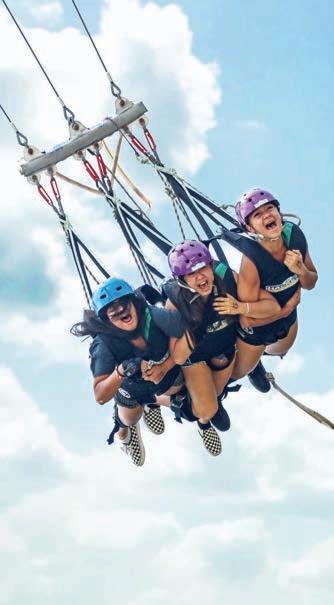
133 UNENDING DISCOVERIES

134 THE SENTOSA STORY
The restful and serene Tanjong Beach is a favourite spot for visitors looking to relax and take in the sunset at the end of the day.

135 UNENDING DISCOVERIES

 Tanjong Rimau, a rocky shoreline featuring an intertidal habitat with rich biodiversity and marine creatures.
Tanjong Rimau, a rocky shoreline featuring an intertidal habitat with rich biodiversity and marine creatures.


138 THE SENTOSA STORY
Conserving and sustaining the island


CHAPTER 5 139 UNENDING DISCOVERIES
As a prominent island destination that is home to an ecosystem of leisure experiences and businesses, Sentosa is a microcosm of Singapore, and provides a unique environment to trial and implement innovative solutions that can advance Singapore’s sustainability journey. This is a journey that requires collective effort… through these efforts, we will strengthen Sentosa’s position as a beloved getaway for Singaporeans, and as a sustainable tourism destination.
MS THIEN KWEE ENG, Chief Executive Officer of Sentosa Development Corporation, at the launch of its sustainability roadmap for Sentosa on 17 September 2021
140 THE SENTOSA STORY
 One of about 60 peafowl that have made their home on Sentosa, adding colour to the landscape and charming multitudes of visitors.
One of about 60 peafowl that have made their home on Sentosa, adding colour to the landscape and charming multitudes of visitors.

142 THE SENTOSA STORY
Intertidal habitats such as the rocky seashore at Tanjong Rimau are some of the most precious on the island. Besides supporting rich biodiversity, Tanjong Rimau features one of the best sedimentary rock outcrops in the region.
Caring for Sentosa and adapting for the future
Protecting the natural environment and cultural heritage
Sentosa’s journey in conservation and sustainability has been wellanchored from its first steps as a recreational island destination in the 1970s. Throughout its transition into the world-class destination that it is today, SDC has prioritised preservation of its natural and cultural heritage alongside its development. Its sustainability achievements to date include certification as a sustainable destination, and as it moves into the future, its sustainability goals will be targeted toward carbon neutrality.
Sentosa is home to 474 species of native flora and fauna, including 28 species that are nationally threatened. These can be found in the precious marine habitats surrounding the island, and in its variety of terrestrial habitats that include secondary rainforests and one of the last remaining stands of coastal rainforests in Singapore. In addition to their ecological benefits, 24 of Sentosa’s trees have been given Heritage Tree status for having important botanical, social, historical, cultural and/or aesthetic values.
143 UNENDING DISCOVERIES
Even beyond sensitive habitats which are protected through zoning, the natural environment is kept intact as much as possible by sensitively integrating new developments into the surrounding landscape. When development does affect the natural landscape, trees are either protected in place during construction, relocated to suitable sites on the island, or replaced through replanting efforts. Native species are also incorporated into the planting palette to enrich the built environment.
As Sentosa’s biodiversity and habitats are ecologically connected to those on mainland Singapore, greening efforts are implemented through a larger-scale perspective, aiming to create and/or strengthen green corridors to provide habitats for wildlife as they move across Sentosa and broader Singapore.

SDC’s conservation efforts also extend into wildlife management. One targeted species is the Critically Endangered Hawksbill Turtle (Eretmochelys imbricata), which has been found to nest on all three of Sentosa’s beaches. Six nests have been recorded since 1996, with the most recent nesting in 2021. When a nesting turtle or turtle nest is discovered, measures are quickly put in place to protect it from natural predators as well as disturbance from people. The nest is monitored until the eggs hatch, at which point SDC’s Environmental Management team assists the hatchlings to make their way safely to the sea.


With dwindling places for sea turtles to nest in Singapore, Sentosa’s beaches provide an important habitat for these species. During sea turtle hatching events, SDC’s Environmental Management team guides the hatchlings to the sea. Conservation efforts also include public outreach and education about the turtles via interpretive signs placed on the beach.

144 THE SENTOSA STORY
A Broad-leafed Mahogany (Swietenia macrophylla) Heritage Tree that can be found along Imbiah Road near Madame Tussauds Singapore. While this species comes from tropical Central and South America, this planted specimen has stood the test of time and is estimated to be around 90 years of age.
Impacts to the natural environment resulting from development are minimised as much as possible. Some attractions, such as the cable car, also serve to showcase the beauty of the forest.

Know? DID YOU
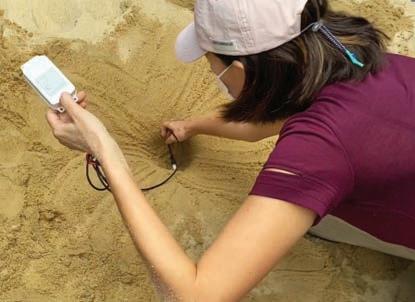
Pink dolphins, commonly known as Indo-Pacific Humpback Dolphins ( Sousa chinensis), can sometimes be spotted frolicking in the waters around Sentosa. 145 UNENDING DISCOVERIES
SDC is championing sustainable travel and leisure activities as part of its broader Sustainable Sentosa Framework. This includes guided walks that offer first-hand encounters with flora and fauna in a responsible way (top), as well as curated heritage trails, such as those to Imbiah Battery (right), that immerse visitors in Sentosa’s military past.

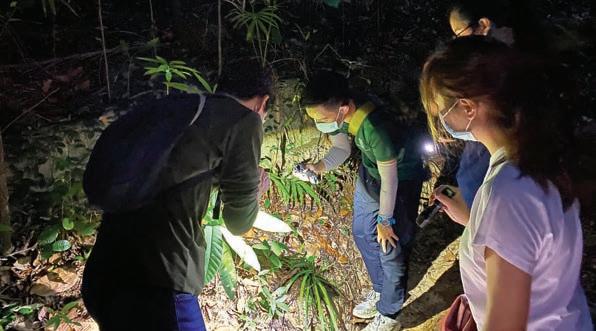
146 THE SENTOSA STORY
Over the years, SDC has established collaborations with Institutes of Higher Learning and other government agencies to deepen the scientific understanding of Sentosa’s biodiversity and habitats. SDC is currently focusing on an islandwide biodiversity survey with the National Parks Board to identify biodiversity gaps and hot spots, and is also working with Nanyang Technological University on a range of studies, including a geological survey of the unique exposed sedimentary layers that can be found on Sentosa, and of the coral reefs off its northern and eastern

coasts. Additionally, surveys of the island’s largest swiftlet colony are ongoing as the swiftlet colonies on Sentosa are the most easily accessed in all of Singapore.
SDC’s conservation efforts also encompass Sentosa’s tangible cultural heritage, as represented through Fort Siloso, Imbiah Battery, the ruins of Fort Serapong, and its 23 other conserved buildings. The initiatives undertaken by SDC to safeguard and protect this heritage are in line with global standards for sustainability in the tourism industry.
Around 50 per cent of Sentosa is covered in greenery, much of which remains as forest habitats.
Know? DID YOU 147 UNENDING DISCOVERIES
A variety of research studies are being conducted to better understand Sentosa’s natural environment.
The Four-lined Tree Frog gets its name from the four stripes down its back. It builds a bubble nest over water, so that when the tadpoles hatch, they will drop into the water and survive.
Sentosa’s Terrestrial Marvels
Sentosa is home to a variety of natural habitats, including tropical secondary rainforests which comprise many tall-growing native tree species, and coastal forests with trees and other plants that are adapted to saline conditions, strong winds and occasional flooding by seawater during high tides. Other terrestrial habitats include shrub-dominated scrublands which can be found on disturbed land at the forest edges, and freshwater habitats that are present on the island in the form of reservoirs and ponds.
Sentosa’s terrestrial habitats provide homes for numerous species of fauna, some of which are highlighted here.

Once considered extinct in Singapore, the Oriental Pied Hornbill has made a comeback in recent years as a result of targeted conservation efforts. It is easy to spot, with its large body and black and white plumage. It has a yellowish bill with a casque on top. The casque is thought to have many uses, including for vocalisation.
The Paradise Tree Snake is an adept climber and camouflages well amongst the island’s trees. It is able to flatten its body to glide from tree to tree. Using its weak venom, it preys on small lizards and frogs.
ORIENTAL PIED HORNBILL Anthracoceros albirostris
FOUR-LINED TREE FROG Polypedates leucomystax
PARADISE TREE SNAKE Chrysopelea paradisi
148 THE SENTOSA STORY
RED TENT SPIDER Cyrtophora unicolor
The Red Tent Spider builds a tentlike web on trees. In the middle of the web, it places a dried leaf that it hides under. These webs are commonly seen along the nature trails around Sentosa.
BLACK-NEST SWIFTLET Aerodramus maximus
Sentosa is known to house the largest colony of swiftlets in Singapore. These birds are known for their ability to echolocate, allowing them to navigate in total darkness. Their nests, made from threads of their saliva, are considered a delicacy, posing a threat to these birds.
BLUE-THROATED BEE-EATER Merops viridis
The Blue-throated Bee-eater feeds on flying insects and catches its prey while in flight. In Singapore, it nests in sand piles, including those found on Sentosa.

GOLDEN-SPOTTED TIGER BEETLE
Cicindela aurulenta
Golden-spotted Tiger Beetles can be found along the sandy paths of Sentosa’s Imbiah Trail. While brightly coloured and patterned, these beetles can be hard to spot as they move very fast. As speedy hunters of invertebrates, they have to stop intermittently to reorientate themselves.
INDIAN PEAFOWL Pavo cristatus
Native to the Indian subcontinent, Sentosa’s peafowl were first brought to the island in the 1980s. They roam freely and can be easily seen foraging for food or roosting up in the trees. Technically, only the brightly coloured males are peacocks, while the females, which are more muted in colour and much smaller, are called peahens.
149 UNENDING DISCOVERIES
TIGER COWRIE
Cypraea tigris
The Tiger Cowrie is a large species that is considered locally Endangered. When covered in its mantle (fleshy body), it camouflages well in the coral reefs and rocky shore habitats around Sentosa, where it is found.
Sentosa’s Marine and Intertidal Wonders
Coral reefs and seagrass meadows can be found in the seas around Sentosa, where they shelter many marine animals and play important roles in food chains. In the coastal intertidal areas –where sea and land meet – are mangroves, which comprise trees and shrubs that are well-adapted to water-logged soil and brackish water, as well as sandy beaches and rocky seashores that are ideal feeding grounds for a variety of shore animals that can be spotted during low tides.

Sentosa’s marine and intertidal habitats house a rich diversity of fauna, some of which are showcased here.
SMOOTH-COATED
NUDIBRANCH Order Nudibranchia
The name nudibranch literally means ‘naked gills’. To protect themselves, some nudibranchs secrete unpleasant toxins and even acids, while others signal to potential predators to keep away with bright warning colours. They are usually seen near reefs or even on coral rubble and rocky shores.
MOSAIC REEF CRAB
Lophozozymus pictor
Locally Endangered, the Mosaic Reef Crab is one of the most poisonous crabs in the world. It can be found among the coral reefs and rocky shores of Sentosa.
MARINE SPIDER
Desis martensi
This species was first discovered by Dr Ludwig Carl Christian Koch in 1872, based on a specimen collected off Sentosa when it was still known as Pulau Blakang Mati. This spider is active during low tides, when it hunts small marine creatures among the rocks. Its light and hairy body allows it to use surface tension to ‘walk on water’.
The Smooth-coated Otter is the largest otter in Southeast Asia, and is named after its velvety smooth coat. It lives in social groups and can be found frequently around Sentosa.
SOLDIER CRAB
Dotilla wichmani
This small species of Soldier Crab is common on our shores. It scoops sand to its mouth, sieves out food from the sand, and then forms the sand into small balls, which it lays out in a pattern around its burrow.
OTTER Lutrogale perspicillata
150 THE SENTOSA STORY
GREAT-BILLED HERON Ardea sumatrana
This is the tallest heron species in Singapore and is locally classified as Critically Endangered. It can sometimes be seen around the coastline of Sentosa. Usually solitary, it stalks prey such as fish, crustaceans, and other aquatic invertebrates in shallow waters.
WHITE-SPOTTED EAGLE RAY Aetobatus mula
The White-spotted Eagle Ray is a gracefully charismatic species that is commonly seen gliding through the waters of Sentosa’s lagoons.
SAND DOLLAR Order Clypeasteroida
Sand dollars are seen on many of Sentosa’s sandy shores, where they are usually half buried in the sand. In contrast to the long spines of their cousins, the sea urchins, sand dollars have small, soft spines that they use like tiny spades to dig into the sand.
HORN-EYED GHOST CRAB Ocypode ceratophthalmus
The beaches of Sentosa are littered with the burrows of this nocturnal crab which comes out at night to scavenge along the beach. It is called the Horn-eyed Ghost Crab because it runs so fast that it appears – and disappears – like a ghost.

BANDED BRITTLE STAR Ophiarachnella
The rare Banded Brittle Star resides on Sentosa’s rocky shores and comes out only at night to forage for carrion and detritus. It has a single opening located on the underside of the central disc, which functions as both a mouth and an anus. During low tide, it can sometimes be spotted ’slithering’ over the rocks with its five long and brittle arms.
HAWKSBILL TURTLE Eretmochelys imbricata
Hawksbill Turtles are migratory species regularly sighted in Singapore’s waters. The females come ashore to lay their eggs usually between June and October, and they can lay up to 200 eggs at one time. All three of Sentosa’s beaches have been used as their nesting habitat.
gorgonia
151 UNENDING DISCOVERIES
Encouraging conservation through the guest experience
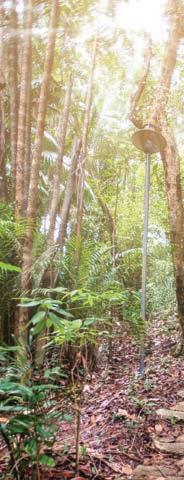
Sentosa’s natural and cultural vibrancy makes it unique in two ways. First, Sentosa is significant for Singapore by acting as a green lung and rich repository of tangible items from the nation’s colonial and World War II periods. Second, as a tourist destination, Sentosa provides opportunities for the public to have first-hand experiences with nature and the historical past.
Over the years, SDC has created nature trails to showcase and
connect visitors to naturally- and culturally-rich locations such as Mount Imbiah, Mount Serapong and the gazetted Fort Siloso. Guests can also readily encounter wildlife on the island even outside of these trails. The landscaped areas attract pollinators such as birds and butterflies, as well as free-roaming peafowl that can often be found foraging for seeds, insects and other food. Although these birds are not native to Singapore, they enrich Sentosa’s biodiversity and rustic charm.

152 THE SENTOSA STORY
One of the four giant sculptures on Palawan Beach that make up recycling artist Thomas Dambo’s sustainability-themed installation. Marked on an interactive digital map, they are intentionally placed in ‘hidden’ locations to lead guests on a quest of discovery.
Through its conservation efforts, SDC strives to evoke a sense of love for Sentosa and nature by creating a sustainable environment that is impactful at all levels – emotive, environmental, relational and cognitive.
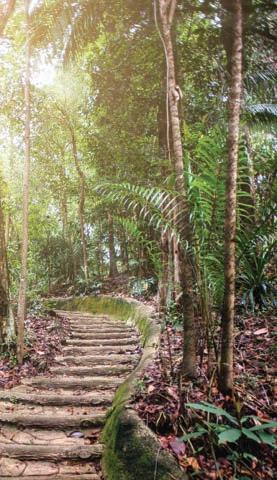
Visitors are also engaged with the natural world through interpretive signs placed around the island, as well as through interactive guest experiences that promote conservation. A good example is the recycled-art installation ‘Explorers of Sentosa’ by Mr Thomas Dambo, which encourages sustainable lifestyle practices and highlights the impacts of waste on the environment.
GIANTS OF SUSTAINABILITY
As Sentosa continues on its sustainability push, it is bringing more partners, visitors and guests on board. In 2022, the Sentosa Development Corporation (SDC) collaborated with internationally-renowned recycling artist Thomas Dambo to create four giant sculptures, made out of recycled materials, on the island’s Palawan Beach.

The four giants, named Reef the Chief, Little Lyn, Dreamer Dee and Curious Sue, share messages of sustainability, such as the need to reduce marine litter, recycle resources, shrink carbon footprints and preserve nature’s delicate ecosystems.
Their construction also brought a community together. Eighteen organisations and over 150 people pitched in to build them, including by sourcing and contributing wood pallets, floorboards and other materials that would have otherwise gone to waste.
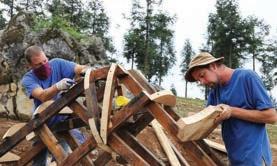
The collaboration spanned SDC staff, the Dambo team, Sentosa Cove residents, local businesses, non-profit groups, and volunteers from community groups and schools. Some of the volunteers even upcycled plastic waste from Sentosa and other parts of Singapore to make accessories for the giants.
While the sculptures will remain on Palawan Beach only until the end of 2024, SDC has other experiential and educational offerings in mind to promote sustainability.
153 UNENDING DISCOVERIES
SentoSights was introduced in 2021 as an activity during the COVID-19 pandemic as visitors sought more outdoor activities and a reconnection to nature. Launched in collaboration with the Singapore Tourism Board as a series of thoughtfully curated trails, SDC is now working with seven operators on 11 tour offerings to provide personal engagement about Sentosa’s history as well as its terrestrial flora and fauna, and marine biodiversity. These include night walks, bird watching trips and intertidal explorations.
Our pathway to carbon neutrality is something we consider quite seriously, simply because climate change impacts Sentosa disproportionately and it is not a straightforward journey. I liken it to a ‘Carbon Everest’ we must surmount and conquer. It is all about how we plan the journey: we have to assemble the right team, prepare the logistics, set up base camp, and plan the legs of the journey into manageable stages, before finally reaching the summit.
 MR LEE CHEH HSIEN Divisional Director, Planning, of Sentosa Development Corporation
One of Sentosa’s earliest nature trails was developed in 1986 after SDC came across historical records documenting the movement of artillery along a path to the Imbiah Battery. Part of the path was incorporated into a nature walk through secondary jungle, ending some 60 metres above sea level on Mount Imbiah. Since then, the trail has been enhanced and is now known as the Mount Imbiah Nature Trail.
MR LEE CHEH HSIEN Divisional Director, Planning, of Sentosa Development Corporation
One of Sentosa’s earliest nature trails was developed in 1986 after SDC came across historical records documenting the movement of artillery along a path to the Imbiah Battery. Part of the path was incorporated into a nature walk through secondary jungle, ending some 60 metres above sea level on Mount Imbiah. Since then, the trail has been enhanced and is now known as the Mount Imbiah Nature Trail.
154 THE SENTOSA STORY
Guided experiences such as the heritage tours at Fort Serapong (top) and intertidal tours (left) allow guests to explore sensitive sites in a sustainable manner. Free access to Fort Siloso, a National Monument, also enables SDC to raise awareness and instil a sense of pride in Singapore’s heritage through programmes and initiatives that use the heritage site as a backdrop.


155 UNENDING DISCOVERIES
The treetop walk extending from the Sentosa Nature Discovery gallery connects to the Mount Imbiah Nature Trail and a coastal nature trail from there. Interpretive signs along the trails feature QR codes that link to videos about Sentosa’s flora and fauna, educating and entertaining visitors while creating greater awareness of the island’s biodiversity.
Opened in 2009, the Sentosa Nature Discovery gallery showcases Sentosa’s different habitats and biodiversity through interpretive and interactive exhibits. The gallery is housed in a repurposed monorail station, with the old monorail track converted into an elevated treetop walk.


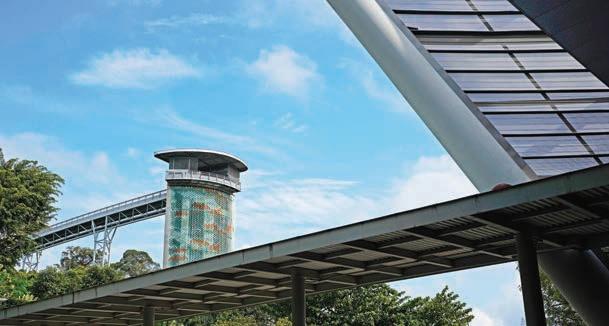 The 11-storey-high and 181-m-long Fort Siloso Skywalk provides guests with a scenic treetop trek leading up to Fort Siloso.
The 11-storey-high and 181-m-long Fort Siloso Skywalk provides guests with a scenic treetop trek leading up to Fort Siloso.
156 THE SENTOSA STORY
Our long-term sustainability goals must remain focused on our core role as the custodian of Sentosa for future generations of visitors, and therefore it must also include us becoming a sustainable tourist destination benchmarked against the best-in-class practices in this field.
To that end, Sentosa strongly advocates the protection of its historical heritage, nature assets and biodiversity in alignment with the other efforts to reduce its environmental footprint.
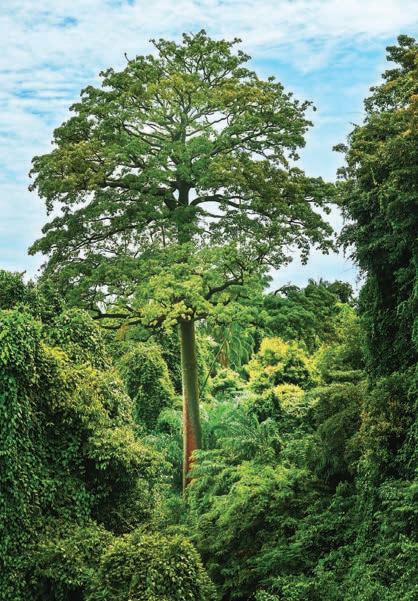 MR ANTHONY TAN Director, Sustainability, of Sentosa Development Corporation
MR ANTHONY TAN Director, Sustainability, of Sentosa Development Corporation
157 UNENDING DISCOVERIES
SDC’s Sustainable Sentosa Framework supports the Singapore Green Plan 2030, a whole-of-nation approach to building a sustainable future, and is aligned with the Singapore public sector’s GreenGov.SG initiative. Sustainability efforts also ensure that the island’s designated Nature Areas, which harbour rich biodiversity, are protected.
Working toward carbon neutrality


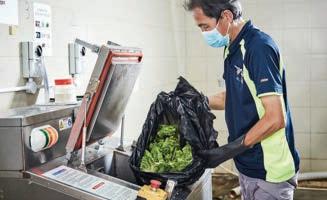
To further solidify Sentosa’s sustainability focus, SDC took a bold step forward in 2021 when it announced plans for the island to become carbon neutral by 2030. In August 2022, Sentosa was conferred the Global Sustainable Tourism Council – For Destinations (GSTC-D) certificate, locking it in as the first island destination in Asia, together with Resorts World Sentosa (RWS), to be certified.

This reaffirms that the steps SDC is taking for collective and collaborative whole-of-island
efforts are in the right direction. SDC has also launched its first carbon neutrality-focused business alliance to bring along all tenants, or island partners, on the island in a Sentosa Carbon Neutral Network. Through this platform, SDC works with 21 island partners (as of 2022) to achieve carbon neutrality through the sharing of best practices – from reducing singleuse plastics on the island, to advocating for local food sourcing, and exploring alternative energy sources.
 SDC and its island partners have championed recycling and other sustainable initiatives.
SDC and its island partners have championed recycling and other sustainable initiatives.
158 THE SENTOSA STORY
Sustainable management of the island extends to facilitating waste reduction by consolidating waste streams, especially horticultural and food waste from island partners, to be more centrally managed. SDC is also exploring the deployment of technology to support the installation of large solar fields. June 2022 saw SDC and RWS announce a large-scale
deployment of photovoltaic cells across 18 sites using mostly roof spaces.
Future steps toward sustainability and achieving carbon neutrality by 2030 will involve emphasising eco-consciousness in future developments, and continued sensitivity toward Sentosa’s stock of heritage buildings and artefacts.

159 UNENDING DISCOVERIES
Placing solar panels on roof spaces, such as these at Resorts World Sentosa, is one of SDC’s initiatives to help Sentosa become carbon neutral by 2030.
From island protectors to heritage assets
For over a century, Fort Siloso has played a crucial role in Singapore’s history. The British colonial government built it in 1878 to guard the narrow western entrance to Singapore’s ‘New Harbour’, now called Keppel Harbour.
When Japanese troops invaded Singapore by land during World War II, the British military turned the fort’s guns towards the mainland to support its ground forces in the country’s defence. It also deployed the guns to destroy oil refineries on the nearby islands of Pulau Bukom and Pulau Sebarok, to prevent the invaders from using them.
After the battle for Singapore, the fort served as a prisoner-of-war camp, for Australian and British soldiers during the Japanese Occupation of Singapore, and then for the Japanese after they surrendered at the end of the war.
Even after the war, it has continued to be in use. In the tense Konfrontasi period from 1963 to 1966, the 10th Gurkha Rifles Unit manned the fort to prevent Indonesian saboteurs from landing on Sentosa, then called Pulau Blakang Mati, and entering Keppel Harbour.

Today, it is a gun museum with a large collection of 19th-century and early 20th-century coastal guns. Its tunnel complexes and buildings have dioramas depicting soldiers’ lives in the 19th century and during World War II. The Surrender Chambers features life-like waxworks, archival films, oral interviews and original World War II artefacts that bring the past to life for visitors.
With its rich history, and as Singapore’s best-preserved 19th-century fort, it was gazetted as Singapore’s 74th National Monument in February 2022. It is the

THE FORTS OF SENTOSA
160 THE SENTOSA STORY
All 60 of Fort Siloso’s guns were stuffed with white liliums and pink and champagne eustomas – flowers symbolising peace –ahead of the historic summit between United States President Donald Trump and North Korean leader Kim Jong Un in 2018, hosted on Sentosa. The images of the flowers made their way into newspapers and other publications around the world.
first monument that is a site with multiple structures, and the first one located outside of mainland Singapore.
Two other forts on Sentosa built at about the same time have significant historical value. Fort Connaught, originally called Fort Blakang Mati East, protected the island’s east. It was renamed after the Duke of Connaught when he visited Singapore in 1890.

On 14 February 1942, as the Japanese were invading, the British destroyed its guns to prevent them from falling into enemy hands. After the war, anything worth salvaging was sold for scrap, and the fort was abandoned. It was opened to the public for the first time in February 2023, for guided tours to mark the Fall of Singapore.
Fort Serapong, the last fort, began as a small infantry redoubt with three muzzle loading cannons. These were replaced by more powerful guns over time. This fort was decommissioned in the mid-1930s after it became obsolete due to the better guns at Fort Connaught and the Serapong Spur Battery.
Another key part of the island’s defence was the Imbiah Battery on Mount Imbiah, which started as an infantry redoubt in 1890, became a gun battery in 1912, and was decommissioned in the mid-1930s without ever seeing any action.
After World War II, it was reoccupied and used as a storage facility before finally becoming disused. Today, it is the only preserved 9.2-inch gun battery in Singapore.

 The Surrender Chambers inside the museum at Fort Siloso brings the surrender of the fort to life through archival films and an immersive scene complete with lifesize wax figures representing Japanese and British forces.
The on-site museum at Fort Siloso details the fort’s significance. It protected precious cargo en route to Singapore from enemy attacks in the colonial period, and its guns fired incessantly at Japanese troops during the invasion of Singapore in World War II, right up to the British forces’ surrender.
The Surrender Chambers inside the museum at Fort Siloso brings the surrender of the fort to life through archival films and an immersive scene complete with lifesize wax figures representing Japanese and British forces.
The on-site museum at Fort Siloso details the fort’s significance. It protected precious cargo en route to Singapore from enemy attacks in the colonial period, and its guns fired incessantly at Japanese troops during the invasion of Singapore in World War II, right up to the British forces’ surrender.
161 UNENDING DISCOVERIES


162 THE SENTOSA STORY

163 UNENDING DISCOVERIES
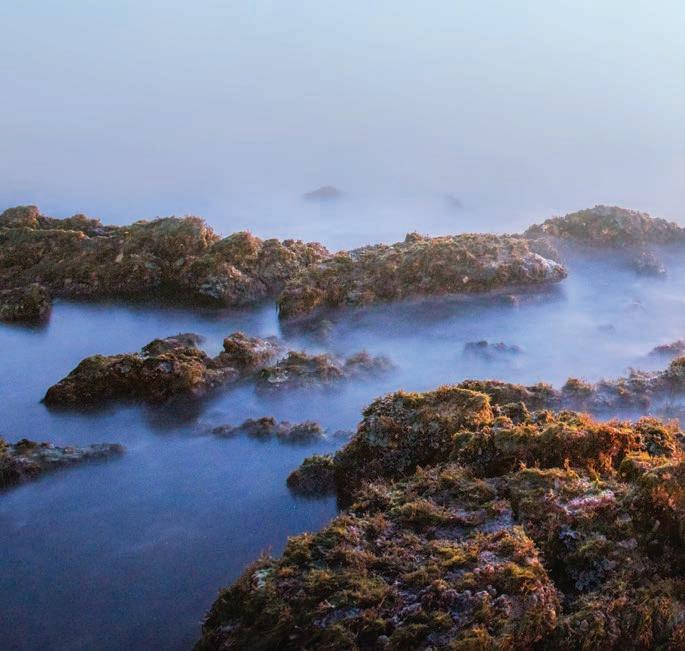
164 THE SENTOSA STORY

165 UNENDING DISCOVERIES
A close-up view of the rocky shore at Tanjong Rimau taken at dusk, with sunlight rays casting a surreal scene.

 An aerial view of Sentosa’s beaches that were reclaimed and extended for the enjoyment of visitors, with different beach clubs adding to their vibrancy and energy.
An aerial view of Sentosa’s beaches that were reclaimed and extended for the enjoyment of visitors, with different beach clubs adding to their vibrancy and energy.
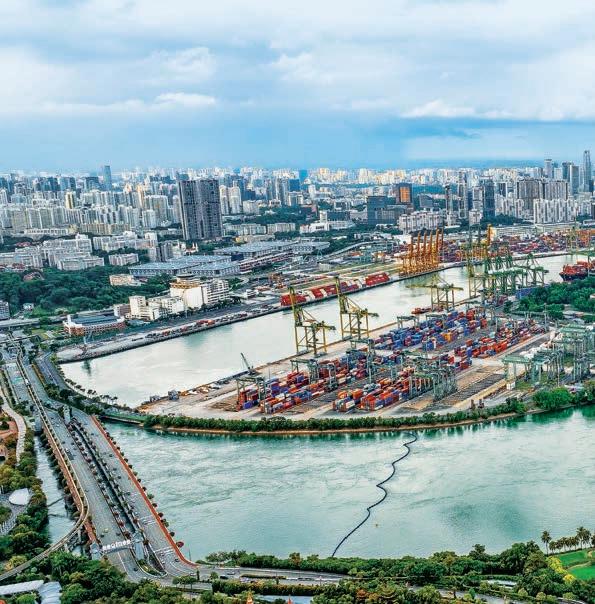
168 THE SENTOSA STORY
the future Reimagining
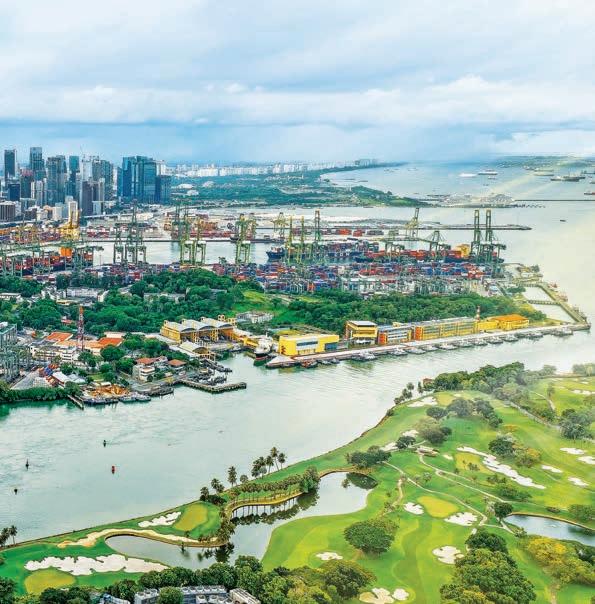
CHAPTER 6 169 UNENDING DISCOVERIES
Our vision for the next 50 years is to see Sentosa become one of the world’s best-loved leisure and lifestyle resort destinations. We will also continue to ensure that Sentosa is inclusive and accessible to Singaporeans from all walks of life. We have so much to look forward to, and we will continue this journey with dedication and passion, to build an island of never-ending discovery.
MR BOB TAN, Chairman of Sentosa Development Corporation
170 THE SENTOSA STORY
 An artist’s impression of the Sensoryscape, an upcoming public park that will be the first milestone of the Sentosa-Brani Master Plan.
An artist’s impression of the Sensoryscape, an upcoming public park that will be the first milestone of the Sentosa-Brani Master Plan.

172 THE SENTOSA STORY
Sentosa’s future is bright as SDC embarks on a bold new vision to redevelop it together with Pulau Brani, shown here on the horizon.
Planning for sustainable development
COVID-19 and growing stronger as One Sentosa
Even after 50 years of delighting visitors, Sentosa’s heart still beats strongly with the desire to be transformative yet relevant to today’s discerning guests. Its path ahead has been shaped by the past 50 years of cumulative experiences, including, most poignantly at this point in time, a resilience forged by the COVID-19 crisis.
When the pandemic wreaked havoc on economies around the world, the tourism sector was among the hardest hit. Borders closed and global travel came to a virtual standstill. Within a few short months of Singapore’s first COVID-19 case, visitorship to the island plummeted by more than 50 per cent.
There were parallels to when the SARS epidemic hit parts of Asia in 2003. As Sentosa’s visitorship plunged during the pandemic, a slew of initiatives were undertaken to keep the island open. SDC lifted its gantry charges, offering free entry to all.
After the circuit breaker period ended, guests flocked to Sentosa’s beaches as outdoor destinations were deemed safer than those indoors. SDC quickly innovated a way to manage the crowds by creating a beach booking system for guests to reserve time slots.
Most hotels on Sentosa became part of the Government’s group of quarantine facilities, providing rooms for returning Singaporeans and permanent residents, and occasional overseas visitors, to serve their quarantine periods. This generated some revenue for the hotels while helping to meet the national need for quarantine facilities. Other businesses on Sentosa benefitted from rental deferments that were part of a larger Government package to assist businesses during the tough times.
YOU
Know
? DID
Launched in March 2022, there are three trails on the Sentosa Heritage Trail for visitors to explore Sentosa. They are Kampong & Barracks, Forts, and Memories of Sentosa. 173 UNENDING DISCOVERIES
got
strategic advantage of being on an island where we can all come together to collaborate on festivals. The whole island can become a festival village for different themes, like food or wellness.
MR CHEW TIONG HENG
Director,
One Sentosa
The pandemic had a silver lining for Sentosa. The island’s business stakeholders, from hotels and attractions to food and beverage partners, rallied together to unite as One Sentosa, passionately championed by SDC CEO Thien Kwee Eng. Thus, when activities were allowed to gradually resume, SDC had a ready platform to collaborate with its island partners to pivot their offerings collectively to appeal to a largely local guest base.
Sentosa, being an island, became the local ‘overseas’ vacation spot. Visitors could enjoy back-of-house tours, small group activities and other pursuits offered through an ‘always on’ calendar of programmes.



Partnering with tour operators to showcase Sentosa’s lesserknown gems, SDC debuted the SentoSights tours. These included intertidal walks, Fort
Siloso night explorations and escapes to St John’s Island. SDC also encouraged hotels to curate staycation packages with different itineraries. The efforts paid off – the island’s local visitorship, which had remained steady for a number of years, soared by over 80 per cent in two years between 2020 and 2022.
The pandemic also sharpened an emphasis on personal wellness and well-being that had already been growing globally. SDC responded to this need by transforming the island into a wellness destination in May 2022, when it launched the inaugural Zentosa wellness festival together with over 30 partners. In October 2022, SDC also kicked off the 10-week Sentosa Food Fest, which further united the island partners as Sentosa saw a strong return of guests across the second half of 2022.
We’ve
the
Divisional
Business and Experience Development, of Sentosa Development Corporation, on Sentosa’s new approach to programming
Sunset Yoga at Siloso Beach.
174 THE SENTOSA STORY
Zentosa Fest 2022 at Palawan Green.
Sentosa, where discovery never ends
In 2023, SDC unveiled a new brand identity, which sees the island taking centre stage and reflects Sentosa’s efforts to better connect with its audiences through leisure experiences that play up the island’s natural attributes, while offering guests a breadth of moments and emotions for them to discover on their own.
The new tagline ‘Where discovery never ends’ draws inspiration from the island’s many unexpected sights, sounds and experiences. It also conveys a promise of the myriad offerings and sense of renewed self that await guests through discovery and experience, with every visit to Sentosa.
Island Soul is a celebration of the natural and physical attributes of the island, including the sun, sand, sea and other natural elements.
Island Discovery ignites curiosity and a desire to explore and discover new sides of Sentosa, or to use Sentosa as a gateway to new experiences, perspectives and destinations.
Island Connection enables the creation of experiences for guests to form new connections and strengthen existing ones, with loved ones and themselves.
Island Future is a commitment to sustainability and social responsibility towards preserving and invigorating the island for the enjoyment of future generations.
After the pandemic, our guests are becoming more discerning about the type of leisure experiences that they are looking for. Our new brand embodies our commitment to delivering authentic experiences that help guests discover themselves through purposeful recreation on the island.
MS MIRA BHARIN Divisional Director, Marketing and Guest Experience, of


Sentosa Development Corporation, on the rationale behind Sentosa’s brand refresh

175 UNENDING DISCOVERIES
The refreshed identity is anchored on four new brand values.
Celebrating Sentosa’s Golden Jubilee

As SDC contemplated the future, it also celebrated Sentosa’s Golden Jubilee with a year-long calendar of events in 2022. The events built into a crescendo as COVID-19 restrictions were eased, with the capstone being a Golden Jubilee Dinner held on 2 September. The guest-of-honour was President Halimah Yacob, who graced the event along with Ministers, dignitaries and island partners. During the event, SDC shared a presentation on the key milestones of the last 50 years, which was followed by the sealing of a time capsule.
The capsule contains 50 items that represent significant eras in Sentosa’s past, from its colonial and military history to SDC’s establishment and Golden Jubilee, as well as plans for the future. These include a book featuring stories and anecdotes from 50 personalities, celebrities and key stakeholders of Sentosa, as well as old admission tickets, staff name tags and used blank ammunition rounds.
As SDC commemorated its halfcentury milestone, it also continued its efforts to give back to the community.
At the dinner, SDC Chairman Bob Tan presented President Halimah with a cheque for over $3.9 million, raised from its Sentosa Golden Jubilee Charity Golf event in partnership with the Community Chest. The funds will benefit a wide range of disadvantaged people.
The many events held to commemorate Sentosa’s Golden Jubilee were wonderful opportunities to mark the past, celebrate the present, and become excited for the future.
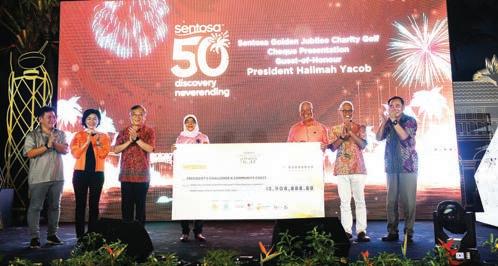
176 THE SENTOSA STORY
Sentosa’s Golden Jubilee celebrations included a charity golf event held on 27 and 28 August 2022. The funds raised were presented to President Halimah Yacob during the Sentosa Golden Jubilee Dinner.
Planning for the future with the Sentosa-Brani Master Plan
The Sentosa we know of today is the aggregation of every prior land-use master plan since 1970 to develop the island as a resort destination. Sentosa’s continual evolution has also been given an added boost with the opportunity to extend its footprint across to the neighbouring 120-hectare island of Pulau Brani. This will provide the space needed to continue shaping Sentosa into a world-class leisure and lifestyle destination for the visitor of tomorrow.
MS JACQUELINE TAN Assistant Chief Executive of Sentosa Development Corporation
The sharing of Sentosa’s future would not be complete without mention of the new Sentosa-Brani Master Plan, which lays out its eventual redevelopment together with the adjacent island of Brani (Pulau Brani).

Pulau Brani shares a similar history as Sentosa. It supported village life before the colonial period, and played a military role after the British arrived and established a maritime base there along with housing for military families. In addition, Pulau Brani has a firm industrial legacy. The Straits Trading Co. built a tin smelting factory there in 1890, which lasted for over 70 years until the late 1960s. From that point, it became a port managed by the Port of Singapore Authority, which will use the island as a container terminal until 2027.
The Sentosa-Brani Master Plan was announced in 2019 by Prime Minister Lee Hsien Loong, as the anchor for leisure and recreation within the new Greater Southern Waterfront District.
177 UNENDING DISCOVERIES
The approximately 1,000-hectare Greater Southern Waterfront articulates a plan to transform the area from Pasir Panjang to Marina East into a new gateway for urban living. It will extend the city to the waterfront, include new residential developments and commercial districts, and incorporate a continuous waterfront promenade to connect places of interest.
With the inclusion of Pulau Brani, SDC will be able to better cluster a higher density of attractions and experiences, as it sits physically close to the mainland and is also in proximity to Resorts World Sentosa (RWS). Moving outward from Pulau Brani, the new master plan envisions a stepping down toward the green lung of Sentosa, and onward to the softened quietude of the Southern Islands, to which Sentosa is a gateway. Comprising St John’s, Lazarus, Kusu and Sisters’ Islands, the Southern Islands are just a 15-minute boat ride away from Sentosa and a haven for marine biodiversity.
The master plan anticipates having five character zones along a Ridge to Reef concept, extending from the ridgeline of Mount Faber from which the cable car runs to the island of Sentosa.


The VIBRANT CLUSTER will be the main entry point for guests, with transport network links to the mainland. It will be a festive and themed attraction centre that includes an expanded RWS.
Sitting between Pulau Brani and Sentosa, the ISLAND HEART will be a lifestyle and commercial hub with hotels, retail outlets and dining options. Centred around a water body, it will feature outdoor activity spaces, alfresco dining and waterfront play areas.
The WATERFRONT ZONE will be located along the north-eastern edge of Pulau Brani, facing the city. It will be linked to the Greater Southern Waterfront, making it an easy getaway for residents in the district. It will have a casual waterfront vibe and a complement of attractions for visitors.
Brani, once a village and now mainly a concrete deck, is where we want to bring back the following with adaptation for the future: the restoration of greenery to support the co-existence of man and nature, a sense of place where island partners and guests want to stay, authentic offerings that bring unique experiences, and sustainable behaviours to respect the use of natural resources.
MR CHAN BENG KIAT Divisional Director, Architecture & Land Planning, of Sentosa Development Corporation
The Vibrant Cluster
The Island Heart
178 THE SENTOSA STORY
The RIDGELINE ZONE will encompass Sentosa’s natural ridge that runs along Fort Siloso to Mount Imbiah and Mount Serapong, which boasts pristine forests that will be ecologically connected through green corridors that extend across Pulau Brani and up to Mount Faber as part of a nature loop. This zone will offer nature-themed attractions that invite discovery and exploration, such as adventure play areas and nature trails.
The BEACHFRONT ZONE references Sentosa’s 3.2 kilometres of golden sand across three beaches that offer relaxing yet active destinations for families and youths. Siloso Beach will remain focused as a party hotspot, Palawan as a family hang-out area, and Tanjong as a more secluded and serene setting for guests. There will be further enhancements to Sentosa’s unique destination dining beach clubs, and greater utility of the beaches as recreation zones with water sports as well as venues for world-class music and other festivals.
SDC will also be evaluating transportation needs for the future as
it continues to strengthen Sentosa’s existing multi-modal transport network and extends this further into Pulau Brani and to the Southern Islands, enabling more local and foreign guests to visit for play and leisure while having a better travelling experience.

The development approach will be one that retains a strong sensitivity to the environment and sustainability. The measures will be done together with strategies to protect forest habitats and coastal areas, including mangroves and coral reefs, by buffering them from future development. New habitat connectors such as eco-links and wetlands will be integrated to improve coastal and riparian habitats and minimise urban heat island effects.
As SDC leads the redevelopment of Sentosa-Brani, it remains firmly committed to protecting the natural and cultural heritage that give the two islands their unique charm – a commitment that has been a defining focus of every master plan set for Sentosa over the past 50 years.


 The Waterfront
The Beachfront
The Ridgeline
The Waterfront
The Beachfront
The Ridgeline
179 UNENDING DISCOVERIES
Master Plans at a glance
The 1970 Master Plan set Sentosa on its path to becoming a tropical island resort to complement Singapore’s economic strategy of promoting tourism. It envisioned Sentosa as a recreational outlet with simple eateries and attractions, and prioritised the retention of its natural and historical heritage alongside new developments.
The 1985 Master Plan aimed to make Sentosa into a first-class recreational resort island. It earmarked the development of a north-south pedestrian link across the island, with clustered attractions along the way. The master plan sought to strengthen the island’s connectivity and existing points of entry, and emphasised the retention of its recreational character alongside its heritage elements.

We treasure our past and commit to building a Sustainable Sentosa for the future. As we grow, we will ignite the passion of our team to bring the best island offerings to our guests. This island has such a unique combination of charm, nature, and fun people. I hope even as we refresh and invigorate, Sentosa will continue to stay relevant and true to who we are, and where we came from.
MS THIEN KWEE ENG
180 THE SENTOSA STORY
Chief Executive Officer of Sentosa Development Corporation
The 1991 Master Plan targeted the reclamation of Buran Darat and the adjacent channel to create land for the development of Sentosa Cove. The project’s goals were to add residential housing to Sentosa’s profile, elevate its standing as a resort island, and cement its position as a major tourist attraction.
The 2002 Master Plan was a major overhaul to position Sentosa as a family resort destination, with three distinct zones featuring consolidated attractions. It targeted a revamp of the beaches in the south, a clustering of activities around Imbiah Lookout in the centre, and the development of a theme park along the waterfront in the north – which came to fruition in 2010 with the launch of RWS.
This master plan underwent several mid-term land use reviews preand post-RWS’s launch to address increased visitorship, tap into spillover opportunities for the rest of the island, and help Sentosa remain regionally and globally competitive against a rapidly changing tourism landscape.
In 2019 , the Sentosa-Brani Master Plan was unveiled to redevelop Sentosa together with the adjacent island of Pulau Brani to form an anchor for leisure and recreation within Singapore’s Greater Southern Waterfront. It envisions five character zones on a Ridge to Reef concept extending from the ridgeline of Mount Faber to the southern shore of Sentosa and beyond to the Southern Islands.
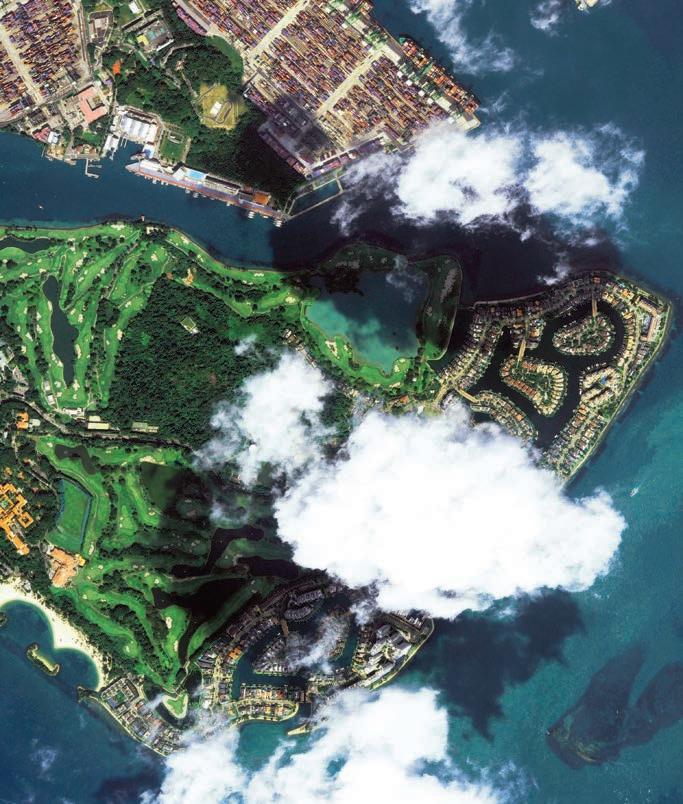
181 UNENDING DISCOVERIES

182 THE SENTOSA STORY
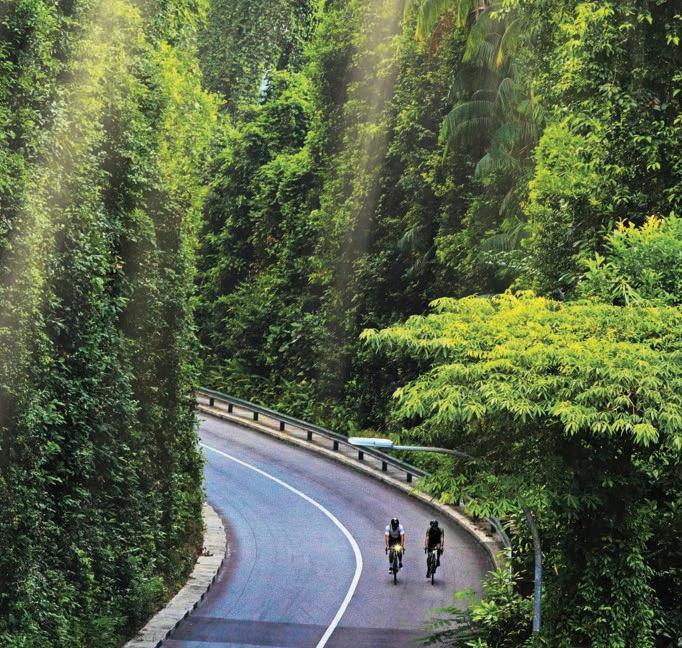
183 UNENDING DISCOVERIES

184 THE SENTOSA STORY

185 UNENDING DISCOVERIES

186 THE SENTOSA STORY
Moments, milestones and
the making of history
Over the past 50 years, Sentosa has become one of Singapore’s most beloved attractions. Here is its story.
 Madame Tussauds Singapore, which opened in 2014.
Madame Tussauds Singapore, which opened in 2014.
187 UNENDING DISCOVERIES
Setting the stage for Sentosa
1967 – 1970
• In the run-up to Singapore’s independence, government agencies suggested different uses for Sentosa, then called Pulau Blakang Mati. These include a freeport zone, water berths for an industrial port and a casino.


• After news was released that the Government had agreed for Esso to establish an oil refinery on the island, Dr Albert Winsemius, a key economic advisor to Singapore, convinces the Government to keep the island for recreation.
• In 1970, the Government engages the Dillingham Overseas Corporation, to produce a master plan study of the island to confirm its tourism potential, and recommend attractions for development. At the same time, Sentosa, which means ‘tranquillity’ in Malay, wins in a contest to rename the island.
• The completed 1970 Master Plan sets out directions for Sentosa, including retaining its key natural assets, and repurposing its historical heritage as attractions.

188 THE SENTOSA STORY
The Sentosa story

1972

• The Government establishes the Sentosa Development Corporation (SDC) as a statutory board through legislation, in order to develop, manage and promote Sentosa.

1974 – 1975
• The cable car transport system linking Sentosa and Mount Faber begins operations, with 43 cabins. It is the world’s first cable car system spanning a harbour. The island also opens its earliest attractions, including the Palawan Beach Lagoon, Sentosa Golf Club, Fort Siloso, Maritime Museum and Coralarium.
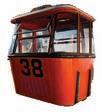
1976
• The Sentosa Art Centre opens at the site of the current Madame Tussauds Singapore museum. It houses wax dioramas of the Japanese surrender in Singapore at the end of World War II. These would later become part of the Pioneers of Singapore and Surrender Chambers exhibitions which open in 1984. A third section, Festivals of Singapore, is added in 1995 and the whole complex is renamed Images of Singapore.

189 UNENDING DISCOVERIES
1978
• The Apollo Sentosa starts hosting guests as Sentosa’s first hotel.


1980s

• SDC kicks off the decade with visitorship to Sentosa exceeding one million for the first time in 1980, at 1.06 million visitors.

• More transport links are added, specifically an electric monorail in 1982 and a ferry terminal in 1987 that both become iconic features of the island.
• As Sentosa continues to flourish, a 1985 Master Plan sets the stage for its next phase of growth, with an array of attractions planned for the 1990s. The plan also earmarks the north-south link’s construction and identifies it as an architectural and attraction spine.
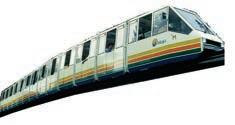
190 THE SENTOSA STORY
1992
• The Causeway Bridge opens, allowing visitors to travel to Sentosa for the first time by bus, bicycle or on foot.

• SDC revamps the island’s beaches into 3.2 km of golden sandy stretches, adorned with coconut palms and ornamental and flowering trees.
1994 – 1995
• New attractions, including the Asian Village in 1994, and Fantasy Island and Volcano Island in 1995, draw more visitors to Sentosa.




1996
• Sentosa unveils a 37-m-tall Merlion Tower, the tallest Merlion in Singapore, along with a mosaic-sculptured Merlion Walk. The Musical Fountain night attraction also debuts a ‘Rise of the Merlion’ show to mark the occasion.
191 UNENDING DISCOVERIES
2002
• A 2002 Master Plan sets out a 10-year overhaul of the island, which includes better attractions, lower entry fees, new hotels and improved transport options to boost its visitorship.
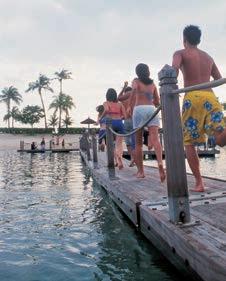

2006 – 2007
• Sentosa launches a series of new beginnings and makeovers. The high-tech water, fire and laser spectacle Songs of the Sea replaces the Musical Fountain, and makes its mark as the world’s only permanent show set in the sea.
• Palawan Beach reopens after an upgrade that expands its food, retail and entertainment offerings. The Sentosa Express light-rail system takes over from the electric monorail.
• Genting International wins the bid to develop and operate Singapore’s first integrated resort, Resorts World Sentosa (RWS), which will include Southeast Asia’s first – and still only – Universal Studios theme park.

2009 – 2010
• RWS and Universal Studios Singapore (USS) open on schedule.

• As Sentosa’s development continues apace, the new Sentosa Green Plan stipulates that at least 60 per cent of the island will remain as green and open spaces.

192 THE SENTOSA STORY
2011 – 2015
• Sentosa forges more connections, literally and figuratively. In 2011, the roughly 700-m-long Sentosa Boardwalk creates an additional link between Sentosa and mainland Singapore.
• In 2015, as Singapore celebrates its Golden Jubilee, Sentosa ranks as one of the top 50 places of significance on the SG Heart Map, a crowd-sourced map of destinations in the country that citizens love and cherish.
2019 – 2021
• In 2019, Prime Minister Lee Hsien Loong announces plans for the Greater Southern Waterfront, including the Sentosa-Brani Master Plan.



• As the COVID-19 pandemic decimates global travel, SDC innovates and launches a beach reservation-only crowd control system to manage the influx of locals and assure guests of their safety while they spend time at the beach.
• SDC and its island partners also implement many plans and activities to attract local residents. These include the SentoSights tours and staycation packages with curated itineraries. This results in an unprecedented increase in local visitorship.

2022 – 2023
• To commemorate Sentosa’s transformation from a fishing village to one of the world’s leading leisure destinations, SDC kicks off celebrations for the island’s Golden Jubilee, celebrating its diverse facets, including lesser-known and new leisure experiences.


• Sentosa’s Fort Siloso is gazetted as Singapore’s 74th National Monument.

• Sentosa becomes the first island destination in Asia to earn the Global Sustainable Tourism Council - For Destinations (GSTC-D) certificate, together with RWS, affirming SDC’s strong push for whole-of-island efforts towards achieving a more sustainable Sentosa.
• In January 2023, Sentosa unveils a new brand identity and new tagline – ‘Where discovery never ends’. The new brand reflects SDC’s efforts to better engage guests through leisure experiences that play up the island’s natural attributes, while offering guests a breadth of moments and emotions for them to discover on their own.
GSTC DVR220101 ®
193 UNENDING DISCOVERIES
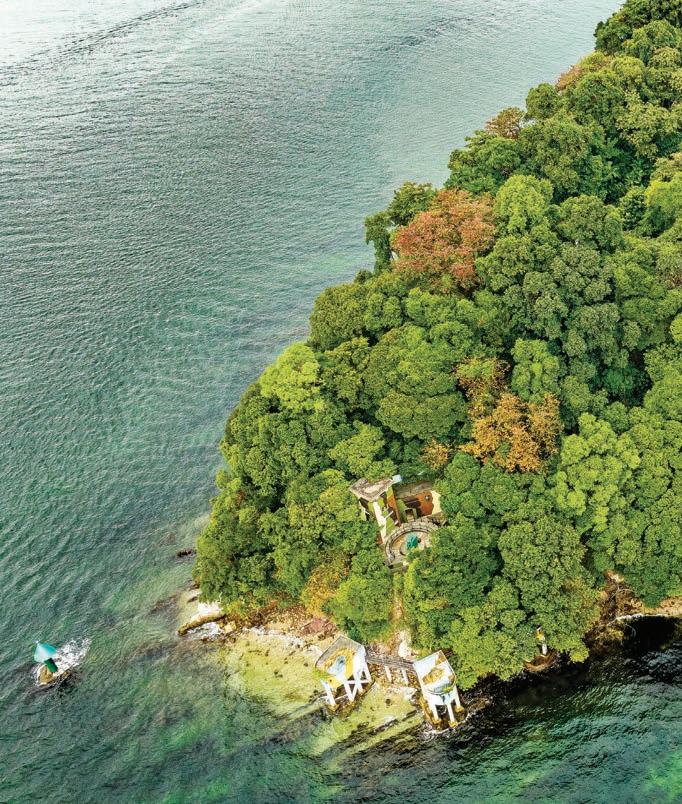
 A top view of Tanjong Rimau at the northwestern tip of Sentosa with its lush greenery.
A top view of Tanjong Rimau at the northwestern tip of Sentosa with its lush greenery.
WELL-WISHES FROM PAST LEADERS

What a journey it has been for Sentosa Development Corporation in making and refining our treasured island resort! The world of leisure and tourism never stands still so the challenge to keep up with the best is perennial. And I can say that through the years, Sentosa has been able to offer multi-faceted, multi-product, and multi-segmented experiences to a diverse spectrum of visitors to establish itself as Singapore’s top leisure destination. I wish Sentosa a glittering Golden Jubilee and many more successful years creating wonderful memories for generations of Singaporeans and visitors. God bless all of you.
MR PHILIP NG Board Chairman 2001 – 2007

196 THE SENTOSA STORY
Generations of Singaporeans have grown up with wonderful memories of their childhood days at Sentosa. Their faces light up at the mention of ‘Sentosa’ – memories of building sandcastles on beaches, riding the cable car, and flying up and down at iFly. With Universal Studios Singapore and Resorts World Sentosa, Sentosa has become even more compelling for Singaporeans and foreigners of all ages. What a journey! I wish Sentosa well at its 50th anniversary and another glorious 50 years.
DR LOO CHOON YONG Board Chairman 2007 – 2012


My heartiest congratulations to the Sentosa Development Corporation (SDC) on its Golden Jubilee. From Sentosa’s humble beginnings as a leisure and recreational playground for Singaporeans, it is now a major regional tourist destination and favourite attraction for foreigners too. I am particularly heartened that its bond with Singaporeans continues to strengthen. The next 50 years will see SDC reach greater heights. I wish the Board and Management every success.
MR MOSES LEE Board Chairman 2013 – 2019

197 UNENDING DISCOVERIES
WELL-WISHES FROM PAST LEADERS

Sentosa’s transformation has been truly remarkable. The sheer breadth and depth of what the island offers has made it a favourite for both tourists and locals. And yet, even as Sentosa celebrates its 50th anniversary, there is more to come. The future holds so much promise for the island. I’m confident that the team at Sentosa will reimagine an integrated destination that will rise above them all and be loved by all!
MR BENSON PUAH Chief Executive Officer 1995 – 1997

I arrived at Sentosa in early 2002 and quickly realized the potential and optimism of our team of experienced employees. We were successful in attracting the two largest projects ever attempted by Sentosa, Resorts World Sentosa and Sentosa Cove, which laid the foundation for a renewed future. I still visit Sentosa frequently on my travels throughout Asia and marvel at how Singaporeans (just like me) take such pride in the Resort Island they have created.
MR DARRELL METZGER Chief Executive Officer 2002 – 2007

198 THE SENTOSA STORY
I have never lost the sense of anticipation and excitement as I cross over from the mainland to Sentosa. This ‘island of fun’ is packed full of beauty and wonder, and I continue to be a regular visitor to its sunny shores. I wish every success to Sentosa for the next 50 years. I encourage everyone involved with the island to continue to dream big, reinvent its offerings and continue to ensure that it’s a ‘must visit’ destination for locals and tourists alike!
 MR MIKE BARCLAY Chief Executive Officer 2008 – 2015
MR MIKE BARCLAY Chief Executive Officer 2008 – 2015

My heartiest congratulations to SDC on its 50th anniversary! Sentosa is steeped in history, and many Singaporeans and visitors have fond memories of Sentosa and how it has evolved over the years. As we enjoy its attractions and events, we also celebrate its cultural and natural heritage. The Sentosa-Brani Master Plan will build a strong foundation for Sentosa’s next phase of growth. I wish the Board and Management all the very best as they take Sentosa to greater heights in the future!
MR QUEK SWEE KUAN Chief Executive Officer 2015 – 2020

199 UNENDING DISCOVERIES
My earliest memories of Sentosa are associated with leaving mainland Singapore and entering a very different world, via the ferry or the cable car with my parents. As a teenager and young adult, I had a lot of fun with my friends at Sentosa’s beaches, or at Underwater World, or at Fantasy Island – and always wished I could have spent more time there. I am amazed at how much Sentosa has changed over the years, while still preserving its identity as a beautiful island that transports its visitors out of busy urban Singapore into a very different environment. As Sentosa enters its next 50 years, may it continue to evolve and grow, without changing its identity as a lush and welcoming island retreat from the hustle and bustle of urban life.
 MR KEITH TAN Chief Executive Officer Singapore Tourism Board 2018 – Present
MR KEITH TAN Chief Executive Officer Singapore Tourism Board 2018 – Present

200 THE SENTOSA STORY
WELL-WISHES FROM PARTNERS
My first visit to Sentosa was when I was around 12 years of age. I can fondly remember some of Sentosa’s older iconic attractions such as the Cable Car, Ferry Terminal, Palawan Beach and the famous Sentosa Musical Fountain, roller skating rink, chalets, as well as long-standing attractions like the beachfront and Fort Siloso, which was recently gazetted as a National Monument. These have offered many indelible memories for families and visitors to the island.
Under the capable stewardship of the Sentosa Development Corporation (SDC), the island has been transformed from a military base into an endearing and well-loved island resort getaway for Singaporeans with interesting nature and heritage trails, and one of Asia’s leading leisure destinations. The island’s built heritage has also been maintained with many colonial-era structures being conserved, and former barracks structures being transformed into hotels and other recreational attractions.
The Urban Redevelopment Authority (URA) has worked closely with SDC on various master plans for the island, the latest being the Sentosa-Brani Master Plan to position Singapore as a leading tourism destination. URA offers our heartfelt congratulations to SDC on your Golden Jubilee. We look forward to our continued close partnership for Sentosa to scale greater heights to become a premier leisure destination in Singapore and Asia.
 MR LIM ENG HWEE Chief Executive Officer Urban Redevelopment Authority 2017 – Present
MR LIM ENG HWEE Chief Executive Officer Urban Redevelopment Authority 2017 – Present

201 UNENDING DISCOVERIES

To understand the present and anticipate the future, one must know enough of the past, enough to have a sense of the history of a people.
MR LEE KUAN YEW
202 THE SENTOSA STORY
Former Prime Minister of the Republic of Singapore

203 UNENDING DISCOVERIES
Acknowledgements
Sentosa Development Corporation would like to thank the following organisations, island partners and individuals for their permission to reproduce their content, and for allowing us the courtesy of publishing their materials.
We would also like to thank present and former colleagues who contributed to this publication.
CONTENT AND PHOTOGRAPH CREDITS
CNA, Mediacorp Pte Ltd
Ministry of Communications and Information
Ministry of Culture, Community and Youth
National Archives of Singapore
- Albert Winsemius Collection
- Arshak C Galstaun Collection
- Economic Development Board Collection
- Kwan Yue Keng Collection
- Ministry of Information and the Arts Collection
- Singapore Tourism Board Collection
National Heritage Board
- National Museum of Singapore Collection
Prime Minister’s Office of Singapore
Resorts World Sentosa
- Crockfords Tower
- Equarius Hotel
- Equarius Villas
- Hard Rock Hotel
- Hotel Michael
- Ora Hotel
Sentosa’s Hotels
- Amara Sanctuary Resort Sentosa
- Capella Singapore
- Oasia Resort Sentosa
- Shangri-La Rasa Sentosa
- Siloso Beach Resort
- Sofitel Singapore Sentosa Resort & Spa
- The Barracks Hotel Sentosa

- The Outpost Hotel Singapore
- Village Hotel Sentosa
- W Singapore Sentosa Cove
The Straits Times © SPH Media Limited
Mrs Ankie Averink (Daughter of Dr Albert Winsemius)
PROJECT TEAM
- Jacqueline Tan
- Alvin Chia
- Yeong Lai Lai
- Pearlly Luo
- Samuel Lim
PRESENT AND FORMER CONTRIBUTING COLLEAGUES OF SDC
- Abdul Rahman Ashaari
- Asmah Aziz
- Mira Bharin
- Chan Beng Kiat
- Chew Tiong Heng
- Regina Chia
- Chiong Gee Khoon
- Chua Bee Tin
- Valerie Foo
- Andy Johnston
- Edward Khoo
- Koh Piak Huat
- Lee Cheh Hsien
- Grace Lee
- Tammy Lim
- Bernice Lum
- Ng Wen Jun
- Freddie Ngiam
- Desmond Ong
- Sarasupathi
- Anthony Tan
- Nicole Thew
- Wong Bee Wah
- Jimmy Wong
- Winston Wong
204 THE SENTOSA STORY
PUBLISHED BY SENTOSA DEVELOPMENT CORPORATION

39 Artillery Avenue, Sentosa Singapore 099958

THE SENTOSA STORY UNENDING DISCOVERIES
© Copyright 2023
SENTOSA DEVELOPMENT CORPORATION ALL RIGHTS RESERVED
All rights reserved. No part of this publication may be reproduced, distributed, or transmitted in any form or by any means, including photocopying, recording, or other electronic or mechanical methods, without the prior written permission of the publisher.
Every effort has been made to trace all sources and copyright holders of news articles, figures and information in this book before publication. If any have been inadvertently overlooked, the Sentosa Development Corporation will ensure that full credit is given at the earliest opportunity.
ISBN 978-981-18-6537-4 (Hardcover)

ISBN 978-981-18-6538-1 (e-Book)
To find out more, visit https://www.sentosa.com.sg/
PROJECT MANAGEMENT: Design, Photography and Production Redbean De Pte Ltd
EDITORIAL: Writers, Editors and Researchers Ada Davis, Feng Zengkun, CQ Wong
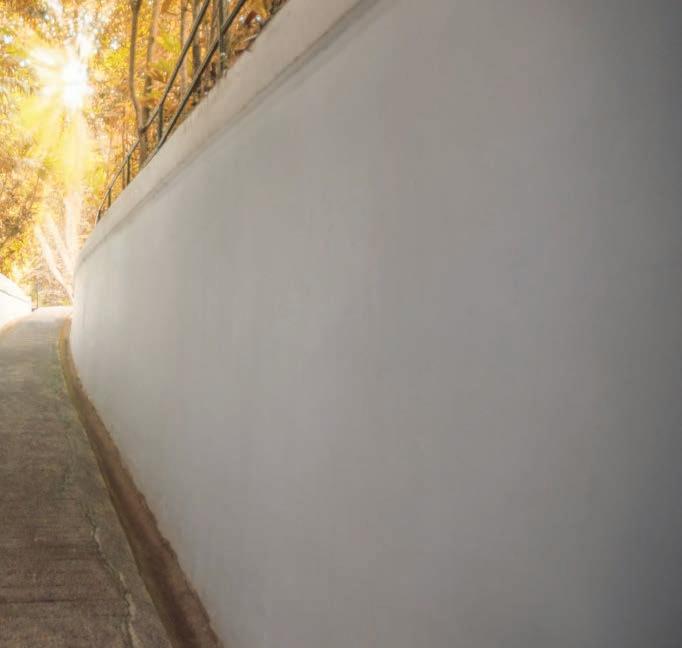 This book is printed using 100% clean energy, vegetable oil ink and environmentally friendly paper. Its entire production is FSC® certified.
This book is printed using 100% clean energy, vegetable oil ink and environmentally friendly paper. Its entire production is FSC® certified.
9789811865381




 A view of Sentosa’s Siloso Beach and magnificent greenery, with the iconic cable car system in the background.
A view of Sentosa’s Siloso Beach and magnificent greenery, with the iconic cable car system in the background.




 This view of Sentosa taken in 2022 is from a similar angle as the aerial photo from the previous page 7. Fifty years after being set on a path to becoming an island resort, Sentosa has grown in size and been reshaped to accommodate developments for more amenities and infrastructure for guests – all while preserving its dense green cover and remnants of its historical past.
This view of Sentosa taken in 2022 is from a similar angle as the aerial photo from the previous page 7. Fifty years after being set on a path to becoming an island resort, Sentosa has grown in size and been reshaped to accommodate developments for more amenities and infrastructure for guests – all while preserving its dense green cover and remnants of its historical past.



































































 A kelong (offshore fishing platform) near Siloso Point, 1957.
A kelong (offshore fishing platform) near Siloso Point, 1957.


 The highest points on Blakang Mati were strategic locations for defence during the colonial period. Hilltops became homes for forts, while barracks and other military facilities were sited on a ridge that runs parallel to the southern coastline, in the vicinity of Mount Imbiah.
Mount Imbiah
Fort Siloso
Pulau Brani
Fort Serapong
The highest points on Blakang Mati were strategic locations for defence during the colonial period. Hilltops became homes for forts, while barracks and other military facilities were sited on a ridge that runs parallel to the southern coastline, in the vicinity of Mount Imbiah.
Mount Imbiah
Fort Siloso
Pulau Brani
Fort Serapong

 Orang Laut stilt houses on the north side of Pulau Brani, with buildings on Blakang Mati in the background, 1900s.
Fort Connaught’s powerful guns guarded the eastern approach into Keppel Harbour. When the Japanese invaded during World War II, these 9.2-inch guns were turned landwards to fire on advancing troops. They were ultimately destroyed to prevent them from falling into enemy hands.
Orang Laut stilt houses on the north side of Pulau Brani, with buildings on Blakang Mati in the background, 1900s.
Fort Connaught’s powerful guns guarded the eastern approach into Keppel Harbour. When the Japanese invaded during World War II, these 9.2-inch guns were turned landwards to fire on advancing troops. They were ultimately destroyed to prevent them from falling into enemy hands.








 Field Marshall Sir Gerald Templer reviewing a marchpast of Gurkha Unit troops on Blakang Mati during a visit in 1960. Sir Templer commanded infantry and armoured divisions during World War II, and later led British forces in fighting a communist revolt during the Malayan Emergency.
Singapore’s first satellite earth station was installed on Sentosa in 1971.
Field Marshall Sir Gerald Templer reviewing a marchpast of Gurkha Unit troops on Blakang Mati during a visit in 1960. Sir Templer commanded infantry and armoured divisions during World War II, and later led British forces in fighting a communist revolt during the Malayan Emergency.
Singapore’s first satellite earth station was installed on Sentosa in 1971.














 The Coralarium opened in 1974 at the foot of Mount Serapong. Situated on four acres of beautiful garden grounds, it provided an interpretation of the world of corals and featured landscaped pools with various species on display.
The Coralarium opened in 1974 at the foot of Mount Serapong. Situated on four acres of beautiful garden grounds, it provided an interpretation of the world of corals and featured landscaped pools with various species on display.



 Before SDC relocated to its current premises at 39 Artillery Avenue, it occupied a heritage building now used by a pre-school, EtonHouse.
In early 2023, staff from SDC and other Sentosians came together for a beach clean-up at the Southern Islands. It was organised as part of the Sentosa Embraces Litter-Free programme, an effort initiated in 2014 to encourage green practices and a sustainable lifestyle amongst Sentosians, island partners and guests.
Before SDC relocated to its current premises at 39 Artillery Avenue, it occupied a heritage building now used by a pre-school, EtonHouse.
In early 2023, staff from SDC and other Sentosians came together for a beach clean-up at the Southern Islands. It was organised as part of the Sentosa Embraces Litter-Free programme, an effort initiated in 2014 to encourage green practices and a sustainable lifestyle amongst Sentosians, island partners and guests.













 Sentosa’s new ferry terminal and terminal plaza, completed in 1987.
Sentosa’s new ferry terminal and terminal plaza, completed in 1987.



 The cable car system linking Sentosa with the mainland was officially opened in February 1974 by then-Deputy Prime Minister and Minister for Defence Dr Goh Keng Swee, who had championed plans to turn the island into a leisure destination.
The cable car system linking Sentosa with the mainland was officially opened in February 1974 by then-Deputy Prime Minister and Minister for Defence Dr Goh Keng Swee, who had championed plans to turn the island into a leisure destination.

 Traveling to Sentosa by cable car was an experience that disconnected visitors from the concrete jungle of the city. Upon arrival at the Carlton Hill station (currently Imbiah Lookout), they would have stepped out onto an island that was, at that point, still largely rustic.
In the early days, guests could explore Sentosa by bus or on foot. For a leisurely adventure, they could also hire a cruiser bike from one of the beach kiosks that SDC put up on the island.
Traveling to Sentosa by cable car was an experience that disconnected visitors from the concrete jungle of the city. Upon arrival at the Carlton Hill station (currently Imbiah Lookout), they would have stepped out onto an island that was, at that point, still largely rustic.
In the early days, guests could explore Sentosa by bus or on foot. For a leisurely adventure, they could also hire a cruiser bike from one of the beach kiosks that SDC put up on the island.




 Behind the new ferry terminal, guests could enjoy a stroll through the Fountain Gardens. Featuring an 18th-century European-style design and topiary plantings, the gardens were a popular backdrop for special events and festivals.
MR ALVIN CHIA
Behind the new ferry terminal, guests could enjoy a stroll through the Fountain Gardens. Featuring an 18th-century European-style design and topiary plantings, the gardens were a popular backdrop for special events and festivals.
MR ALVIN CHIA


 With a pair of towers marking each end, the Causeway Bridge served as an arrival gateway for visitors entering the island resort. Its completion in 1992 was a significant achievement representing SDC’s commitment to transform Sentosa into a world-class holiday destination by improving the island’s transport infrastructure.
With a pair of towers marking each end, the Causeway Bridge served as an arrival gateway for visitors entering the island resort. Its completion in 1992 was a significant achievement representing SDC’s commitment to transform Sentosa into a world-class holiday destination by improving the island’s transport infrastructure.

 The original Causeway Bridge was expanded with more lanes in the late 1990s and a new bridge was added in the 2000s. The Sentosa Express was completed in 2006, reflecting Sentosa’s growing popularity over a relatively short time period. With the Sentosa Express easily accessible from the Mass Rapid Transit system at VivoCity, the two developments also helped to link Sentosa to Singapore’s broader transportation networks.
The original Causeway Bridge was expanded with more lanes in the late 1990s and a new bridge was added in the 2000s. The Sentosa Express was completed in 2006, reflecting Sentosa’s growing popularity over a relatively short time period. With the Sentosa Express easily accessible from the Mass Rapid Transit system at VivoCity, the two developments also helped to link Sentosa to Singapore’s broader transportation networks.







 Connecting Sentosa to Singapore’s Greater Southern Waterfront area, the Sentosa Boardwalk originates at VivoCity on the mainland and leads directly to Resorts World Sentosa.
Connecting Sentosa to Singapore’s Greater Southern Waterfront area, the Sentosa Boardwalk originates at VivoCity on the mainland and leads directly to Resorts World Sentosa.
 MR KOH PIAK HUAT Divisional Director, Operations, of Sentosa Development Corporation
The striking Sentosa Boardwalk has won awards for its design. It was the first garden-themed boardwalk to open in Southeast Asia and features lush landscapes enhanced by spectacular views of the harbour. Beneath its covered canopy is a series of travelators, for those interested in shortening the 15-minute stroll across the water.
MR KOH PIAK HUAT Divisional Director, Operations, of Sentosa Development Corporation
The striking Sentosa Boardwalk has won awards for its design. It was the first garden-themed boardwalk to open in Southeast Asia and features lush landscapes enhanced by spectacular views of the harbour. Beneath its covered canopy is a series of travelators, for those interested in shortening the 15-minute stroll across the water.







 Sentosa Cove is one of Singapore’s most premium addresses, with its unique waterfront lifestyle setting flanked by the ONE°15 Marina, which has been named the Best Asian Marina at the Asia Boating Awards multiple times.
Sentosa Cove is one of Singapore’s most premium addresses, with its unique waterfront lifestyle setting flanked by the ONE°15 Marina, which has been named the Best Asian Marina at the Asia Boating Awards multiple times.



 Sentosa Golf Club’s Tanjong Course, which opened in 1974 and has undergone redevelopment and a redesign to host large tournaments and offer championship-level play.
Sentosa Golf Club’s Tanjong Course, which opened in 1974 and has undergone redevelopment and a redesign to host large tournaments and offer championship-level play.

 Palawan Beach Lagoon drew scores of people to Sentosa after its opening in 1974. Although man-made, the site’s mature vegetation was conserved as much as possible during the reclamation and development works. This helped to retain the rustic vibe that charmed guests to the island.
Palawan Beach Lagoon drew scores of people to Sentosa after its opening in 1974. Although man-made, the site’s mature vegetation was conserved as much as possible during the reclamation and development works. This helped to retain the rustic vibe that charmed guests to the island.





 Reclamation works along Sentosa’s northern coast allowed the construction of the Sentosa Golf Club’s Serapong Course, considered one of the best in the world. In 2022, it was ranked 55 on Golf Digest’s list of the 100 Greatest Golf Courses in the World, and also won the title of Asia’s Best Golf Course at the World Golf Awards.
MR ANDY JOHNSTON
Reclamation works along Sentosa’s northern coast allowed the construction of the Sentosa Golf Club’s Serapong Course, considered one of the best in the world. In 2022, it was ranked 55 on Golf Digest’s list of the 100 Greatest Golf Courses in the World, and also won the title of Asia’s Best Golf Course at the World Golf Awards.
MR ANDY JOHNSTON


 Sentosa Cove offers a casual waterfront lifestyle close to the busy mainland of Singapore (shown in the background).
Sentosa Cove offers a casual waterfront lifestyle close to the busy mainland of Singapore (shown in the background).














 The Sentosa Merlion, a favourite of visitors for over two decades from 1996 to 2019.
The Sentosa Merlion, a favourite of visitors for over two decades from 1996 to 2019.
























 Songs of the Sea won the prestigious Thea Award for Outstanding Achievement for Event Spectacular and the ASEANTA Award for Best ASEAN New Tourist Attraction.
Fronting the beach, the Siloso Beach Resort was designed with nature integrated into the hotel, and a swimming pool that uses natural spring water.
Songs of the Sea won the prestigious Thea Award for Outstanding Achievement for Event Spectacular and the ASEANTA Award for Best ASEAN New Tourist Attraction.
Fronting the beach, the Siloso Beach Resort was designed with nature integrated into the hotel, and a swimming pool that uses natural spring water.









 Equarius Hotel
Equarius Villas
Equarius Hotel
Equarius Villas










 New developments at Sentosa’s beaches gave visitors more dining and leisure options. These included FOC Sentosa (top), a new beach club and restaurant at Palawan Beach, and C Side (bottom) at Siloso Beach, with its range of five unique restaurants.
New developments at Sentosa’s beaches gave visitors more dining and leisure options. These included FOC Sentosa (top), a new beach club and restaurant at Palawan Beach, and C Side (bottom) at Siloso Beach, with its range of five unique restaurants.

 Coinciding with Sentosa’s rebranding as ‘The State of Fun’, new attractions offered a variety of pleasures, such as Madame Tussauds Singapore (top), Skypark Sentosa with its bungy jumping and other thrilling experiences (above), Trickeye @ Southside Singapore where guests could ‘insert’ themselves into life-sized backdrops for memorable photos (facing page), and more.
Coinciding with Sentosa’s rebranding as ‘The State of Fun’, new attractions offered a variety of pleasures, such as Madame Tussauds Singapore (top), Skypark Sentosa with its bungy jumping and other thrilling experiences (above), Trickeye @ Southside Singapore where guests could ‘insert’ themselves into life-sized backdrops for memorable photos (facing page), and more.




 Amara Sanctuary Resort Sentosa
Capella Singapore
Village Hotel Sentosa
Amara Sanctuary Resort Sentosa
Capella Singapore
Village Hotel Sentosa




 Sofitel Singapore Sentosa Resort & Spa
The Barracks Hotel Sentosa
Sofitel Singapore Sentosa Resort & Spa
The Barracks Hotel Sentosa







 Tanjong Rimau, a rocky shoreline featuring an intertidal habitat with rich biodiversity and marine creatures.
Tanjong Rimau, a rocky shoreline featuring an intertidal habitat with rich biodiversity and marine creatures.




 One of about 60 peafowl that have made their home on Sentosa, adding colour to the landscape and charming multitudes of visitors.
One of about 60 peafowl that have made their home on Sentosa, adding colour to the landscape and charming multitudes of visitors.



















 MR LEE CHEH HSIEN Divisional Director, Planning, of Sentosa Development Corporation
One of Sentosa’s earliest nature trails was developed in 1986 after SDC came across historical records documenting the movement of artillery along a path to the Imbiah Battery. Part of the path was incorporated into a nature walk through secondary jungle, ending some 60 metres above sea level on Mount Imbiah. Since then, the trail has been enhanced and is now known as the Mount Imbiah Nature Trail.
MR LEE CHEH HSIEN Divisional Director, Planning, of Sentosa Development Corporation
One of Sentosa’s earliest nature trails was developed in 1986 after SDC came across historical records documenting the movement of artillery along a path to the Imbiah Battery. Part of the path was incorporated into a nature walk through secondary jungle, ending some 60 metres above sea level on Mount Imbiah. Since then, the trail has been enhanced and is now known as the Mount Imbiah Nature Trail.




 The 11-storey-high and 181-m-long Fort Siloso Skywalk provides guests with a scenic treetop trek leading up to Fort Siloso.
The 11-storey-high and 181-m-long Fort Siloso Skywalk provides guests with a scenic treetop trek leading up to Fort Siloso.
 MR ANTHONY TAN Director, Sustainability, of Sentosa Development Corporation
MR ANTHONY TAN Director, Sustainability, of Sentosa Development Corporation




 SDC and its island partners have championed recycling and other sustainable initiatives.
SDC and its island partners have championed recycling and other sustainable initiatives.





 The Surrender Chambers inside the museum at Fort Siloso brings the surrender of the fort to life through archival films and an immersive scene complete with lifesize wax figures representing Japanese and British forces.
The on-site museum at Fort Siloso details the fort’s significance. It protected precious cargo en route to Singapore from enemy attacks in the colonial period, and its guns fired incessantly at Japanese troops during the invasion of Singapore in World War II, right up to the British forces’ surrender.
The Surrender Chambers inside the museum at Fort Siloso brings the surrender of the fort to life through archival films and an immersive scene complete with lifesize wax figures representing Japanese and British forces.
The on-site museum at Fort Siloso details the fort’s significance. It protected precious cargo en route to Singapore from enemy attacks in the colonial period, and its guns fired incessantly at Japanese troops during the invasion of Singapore in World War II, right up to the British forces’ surrender.






 An aerial view of Sentosa’s beaches that were reclaimed and extended for the enjoyment of visitors, with different beach clubs adding to their vibrancy and energy.
An aerial view of Sentosa’s beaches that were reclaimed and extended for the enjoyment of visitors, with different beach clubs adding to their vibrancy and energy.


 An artist’s impression of the Sensoryscape, an upcoming public park that will be the first milestone of the Sentosa-Brani Master Plan.
An artist’s impression of the Sensoryscape, an upcoming public park that will be the first milestone of the Sentosa-Brani Master Plan.















 The Waterfront
The Beachfront
The Ridgeline
The Waterfront
The Beachfront
The Ridgeline







 Madame Tussauds Singapore, which opened in 2014.
Madame Tussauds Singapore, which opened in 2014.































 A top view of Tanjong Rimau at the northwestern tip of Sentosa with its lush greenery.
A top view of Tanjong Rimau at the northwestern tip of Sentosa with its lush greenery.








 MR MIKE BARCLAY Chief Executive Officer 2008 – 2015
MR MIKE BARCLAY Chief Executive Officer 2008 – 2015


 MR KEITH TAN Chief Executive Officer Singapore Tourism Board 2018 – Present
MR KEITH TAN Chief Executive Officer Singapore Tourism Board 2018 – Present

 MR LIM ENG HWEE Chief Executive Officer Urban Redevelopment Authority 2017 – Present
MR LIM ENG HWEE Chief Executive Officer Urban Redevelopment Authority 2017 – Present




 This book is printed using 100% clean energy, vegetable oil ink and environmentally friendly paper. Its entire production is FSC® certified.
This book is printed using 100% clean energy, vegetable oil ink and environmentally friendly paper. Its entire production is FSC® certified.